AMBULANCE
IRELAND

DFB’S KILLINEY WILDFIRE OPERATION FIRE ON THE HILL














PROVIDING HOPE
FASHION CAMPAIGN RAISING VETERAN AWARENESS




THE CIVIL DEFENCE K-9 UNIT TAKING THE




LEAD













2023 EMERGENCY SERVICE AND MEDICAL REVIEW
DUBLIN FIRE RESCUE EMERGENCY AMBULANCE SERVICE
DUBLIN FIRE RESCUE EMERGENCY AMBULANCE SERVICE





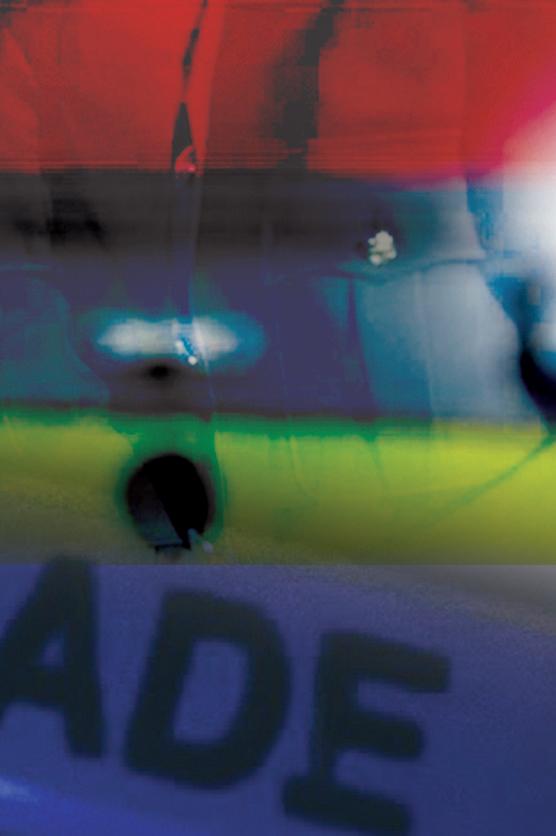





PROTECTING THE CITY AND COUNTY SINCE 1862
Protecting The City & County Since 1862

@dubfirebrigade








38 DFB RECRUITMENT CAMPAIGN Encouraging Diversity and Compassion 40 TAKING THE LEAD The Civil Defence K-9 Unit 44 TECHNOLOGY 47 BOOKSHELF CONTENTS TABLE OF 2023 03 EDITOR’S LETTER 04 IRISH NEWS 06 INTERNATIONAL NEWS Medical and Emergency services News from around the World 07 MARITIME MISSION A round-up of the Irish Coast Guard’s Year 10 ROAD FATALITIES ON RISE AGAIN Road Safety’s Ongoing Challenge 15 THE YEAR IN REVIEW The Irish Defence Forces 19 PATH TO SUCCESS NAS Pathfinder Initiative Gets Overwhelmingly Positive Feedback 22 CALLING OUT UNNECESSARY CALLOUTS Frivolous Calls to the NAS 24 200 YEARS STRONG The Irish Coast Guard Celebrates a Milestone 26 DOMESTIC ABUSE CASES RISE A Worrying Trend 28 DAFT FUNK Dublin Fire Brigade’s Viral Charity Video 30 FIRE ON THE HILL The DFB’s Action at the Killiney Wildfire 34 PROVIDING HOPE A New Clothing Campaign Fighting Veteran Homelessness 15 34 40













The Irish Meteorological Service www.met.ie Visit www.met.ie and get the 10-day hourly weather forecast Met Éireann Met.ie has redesigned its homepage with extra forecast information and a mobile-friendly design. Warning Services: Sign-up to receive push notifications for all our warnings for your location. We are currently transitioning to an impact-based warning service which will be more of a focus on forecasting what the weather will do rather than what the weather will be. Met Éireann forecasters now issue a daily audio weather forecast as a podcast at 6am, noon and 6pm with a detailed look at the week ahead as well as the latest warnings and advisories. for any location in Ireland
Editor: Adam Hyland
Contributors: Adam Hyland
Creative Director: Jane Matthews
Designer: Neasa Daly
Cover Credit: Irish Civil Defence
Photography: An Garda Síochána, Road Safety Authority, Dublin Fire Brigade, HSE, NAS, Coast Guard, Óglaigh na hÉireann/Irish Defence Forces, Óglaigh Naisiúnta na hÉireann (ONE), Civil Defence, Gallery Books, New Island, O’Brien Press, Simon & Schuster, iStock, Shutterstock.
Production Executive: Claire Kiernan
Publisher: Ashville Media Group, Unit 55, Park West Road, Park West Industrial Estate, Dublin 12, D12 X9F9.
Tel: (01) 432 2200
Fax: (01) 676 6043
Managing Director: Gerry Tynan
Chairman: Diarmaid Lennon
Publisher’s Statement:
The information in Ambulance Ireland is carefully researched and believed to be accurate and authoritative, but the Publisher cannot accept responsibility for any errors or omissions. Statements and opinions expressed herein are not necessarily those of the Editor or the Publisher.
Copyright ©Ashville Media Group Ltd.
the Publisher.
Dear readers,
Welcome to the 2023 edition of Ambulance Ireland. As always, we bring you the latest news and features covering Ireland’s medical and emergency services sectors, as well as interesting and inspiring stories from our frontline personnel and from around the globe.
The last few years have presented exceptional challenges to all emergency service and frontline personnel, and we must remember that a huge amount of thanks must go to those people who help keep us safe.
Although Ireland thankfully doesn’t see the same level of wildfires that other countries face, they do still happen, and as the global climate heats up, they are likely to become more common. With this in mind, it is good to know that within our capital, Dublin Fire Brigade has the expertise to handle such situations, as is shown in our look back at the major wildfire event that occurred last July in Dalkey. As our feature shows, quick thinking, valuable experience, technology and hard work meant there was no loss of life and minimal damage to property. Well done to all DFB members involved!
The Civil Defence plays an important role in keeping us safe in times of emergency, and their ever-expanding team brings a range of expertise to the vital roles they play. I was delighted to talk to Shane Quinn and Karen Kelly about their involvement, and to hear about the K-9 Unit that brings a particular set of skills to rescue and recovery operations. Their work is to be applauded.
In this issue, we take a look at the brilliant new campaign by Óglaigh Naisiúnta na hÉireann (ONE), a charity that assists veterans in need. Their ‘Hope Couture’ clothing campaign is raising awareness and much-needed funds to help veterans who have served their country but now find themselves without a home. We look at the idea behind the campaign and hear from the veterans who modelled the range and were happy to tell their stories of how the charity helped them.
We also take a look at another busy year for the Defence Forces and the Coast Guard to see just what is involved in protecting us and keeping us safe on land and at sea.
Elsewhere, we look at the latest road safety stats and campaigns, see what’s involved in a DFB recruitment campaign and a new Pathfinder initiative for emergency care at home, report on the worrying rise in domestic violence, and see what’s new in the world of emergency services technology.
Best wishes,
EDITOR’S PICKS
30
FIRE ON THE HILL DFB’s Killiney Wildfire Operation
40
TAKING THE LEAD The Civil Defence K9 Unit
03 AMBULANCE YEARBOOK 2023
No part of
may be reproduced, stored in a retrieval system or transmitted in any form or by any means without written permission from
this publication
Adam Hyland
PROVIDING HOPE Fashion Campaign Raising Veteran Awareness 34
EDITOR LETTER FROM THE
IRISH NEWS
One in three (34%) patients presented to emergency departments (EDs) on average twice in the last 12 months for non-life-threatening illnesses when other urgent care options were available.
New research carried out by Laya Healthcare reveals that Irish people attended their local hospital ED at least once for minor illnesses or injured, which could have been treated by their GP, pharmacist or local urgent care clinic. More than four in ten (44%) were unaware of any other urgent care options. This figure climbed to half of younger people aged 25 to 34 years of age.
An assumption that they would be seen sooner in their local ED (43%), and proximity to home or work (23%) were cited as the top reasons why those with minor injuries chose to go to their local hospital.
1 IN 3 AT EMERGENCY DEPARTMENTS ARE NOT NECESSARY IRISH HEALTHY HABITS INCREASING
Irish people are eating healthier and smoking less, according to a new report from the OECD. The latest Health at a Glance 2022 report reveals that Ireland tops the EU for daily consumption of fruit and vegetables. Across all EU states, just 12% of adults consume the recommended five or more portions per day, but 33% of Irish people reach this target. There are also significantly fewer Irish people who smoke, according to the report. In 2020, almost one in five adults (19%) across EU countries smoked daily, in comparison to 16% of adults in Ireland.
Smoking rates have dropped by 8% here, down from 24% in 2010: the second largest drop across EU countries behind only Estonia, which saw its smoking rates fall from 27% in 2010 to 18% in 2020. While individual choices regarding health are covered, the report also highlights the threat posed by air pollution and climate change, which increases the risk of serious health problems including respiratory diseases, lung cancer, cardiovascular diseases and leukaemia.
Exposure to fine particulate matter is estimated to have caused 307,000 deaths in 2019 across EU countries, with mortality rates highest in Central and Eastern Europe, where premature death rates are 50% higher than the EU average of 69 per 100,000. Ireland had one of the lowest rates (27 per 100,000), behind only Iceland (14 per 100,000) and Norway (23 per 100,000).
MINISTER HAILS CANCER ADVANCES
Minister for Health Stephen Donnelly marked World Cancer Day in February by highlighting a new report that says Ireland’s increased five-year cancer survival rates are indicative of “high-quality care”.
A recently published profile of the country by the Organisation for Economic Cooperation and Development (OECD) for the European Cancer Inequalities Registry shows the per capita mortality for nine of the 10 most common cancers between 2011 and 2019, with the mortality rate reduced by 14% for men and 13% for women.
For the first time, the number of patients living after an invasive cancer diagnosis has exceeded the 200,000-mark, equivalent to one in 24 people in Ireland.
Progress continues via the roll-out of Ireland’s National Cancer Strategy 2017-2026, which was supported by an additional €20million in funding in 2021 and again in 2022.
These improved outcomes are the result of significant investment in cancer services and supports, including prevention and screening.
Minister Donnelly lauded this progress, saying: “We have made significant strides in recent years, providing access to revolutionary new therapies, appointing additional acute oncology nurses to help cancer patients avoid EDs, and we’re now easing the financial burden through the abolition of all public hospital inpatient charges.
“Tackling cancer is a mammoth task, but we are seeing progress, and I’m heartened that we are reporting increased survival rates and seeing more people live longer with, and beyond, cancer.”
04 AMBULANCE YEARBOOK 2023
THE
NEWS
LATEST IN NATIONWIDE HEALTH, MEDICAL AND EMERGENCY SERVICES
HEALTH CLAIM COSTS EXAMINATION
An Interdepartmental Working Group will be set up to investigate the escalating cost of health-related claims and consider mechanisms to reduce costs.
The Group will examine the rising cost of clinical negligence claims in the health system, with a particular focus on high-value claims. Considerations will include developing a plan to implement risk management and other initiatives to reduce the occurrence of adverse
incidents and to recommend measures to address patient concerns. The Group will also examine the health system’s involvement in the claims process, in particular its role in the provision of evidence/medical records with a view towards streamlining the process.
Consultant Obstetrician and Specialist in Foetal Medicine Dr Rhona Mahony will independently chair the Group, which will be comprised of members from across key Government departments and agencies.
DEFENCE FORCES €5M DOCTOR BILL
The Defence Forces spent more than €5million on agency doctors from 2019 to 2022. The expenditure grew from €1.3m in 2019 to €1.4m in 2020 and €1.5m a year later. The figure to November 2022 stood at €995,841. The expenditure comes in the context of recruitment di iculties regarding medical o icers. Meanwhile, the military medicine training scheme is set to continue, providing dual qualifications in military medicine and general practice, with the first trainee due to complete the full cycle of training in April.
IN-PATIENT CHARGES BILL PUBLISHED
HSE NAS PARAMEDIC RECRUITMENT CAMPAIGN
The HSE has launched a recruitment campaign to create a National supplementary panel for student paramedics in the National Ambulance Service on the Paramedic Training Programme.
The campaign aims to appoint a pool of qualified paramedics licensed to practice by the PreHospital Emergency Care Council who will be o ered positions at the grade of Paramedic.
Assessment of applicants took place at the start of March, with interviews commencing on 17 April.
Successful applicants will be enrolled in a three-year, paid degree-level programme at the NAS College.
The Government o icially approved the scrapping of in-patient hospital charges in January. The publication of the General Scheme of the Health (Abolition of Public In-Patient Charges) Bill 2023 will remove the acute public in-patient charge of €80 per day, up to a maximum of €800 in a year (including day-case charges), for people accessing care as a public patient in all public hospitals. Announcing publication of the new legislation, Health Minister Stephen Donnelly said: “I am delighted to receive Government approval to publish the General Scheme of this important Bill. This draft legislation, when finalised and enacted, will remove for everybody the existing financial burden of public in-patient charges when accessing care.
“This measure builds on the abolition of public in-patient charges for children, and is another significant step in ensuring that people have access to a ordable healthcare services.”
05 AMBULANCE YEARBOOK 2023
NEWS THE LATEST IN NATIONWIDE HEALTH, MEDICAL AND EMERGENCY SERVICES NEWS
IRISH
INTERNATIONAL NEWS


AMBULANCE
DRIVER
CRASHES AFTER 17-HOUR SHIFT
An ambulance crash in Tokyo in December has brought to light the extremely tough conditions emergency service workers have experienced while Japan faced another wave of COVID-19 over the winter months. The vehicle hit a centre divider and overturned on a national route in Akishima, western Tokyo, at around 1.50am on 29 December, with a review of the incident published in January revealing that the driver had become drowsy after working 17 hours straight. There were no patients on board at the time, as the ambulance had just transported a patient to hospital and was returning to its fire station, but the driver and two other paramedics all su ered minor injuries. Footage from on board the vehicle showed the driver and two other paramedics nodding o having clocked up 17 hours without a single break, amid a surge in emergency calls from COVID-19 patients. It was revealed that the three paramedics on board had started their shift at 9am on 28 December and had been dispatched seven times, with each case taking an average of two hours or more, before they were overcome with fatigue at 1.50am the next morning. The Tokyo Fire Department said emergency services were running at more than 95% of capacity on the day of the accident.
LARGE INCREASE IN AMBULANCES REQUIRED
Dozens of additional ambulances will be needed to properly meet the demand for ambulance care in the Netherlands this year, according to new research by the Dutch National Institute for Public Health and the Environment (RIVM). They calculated that a total of 692 ambulances are required during daytime hours on working days, representing an increase of 40 ambulances compared to 2022. An increase in demand of an additional 40 for Saturdays and 35 for Sundays is also expected. Over the course of a week, it is calculated that 10,104 8-hour shifts will be needed in 2023, a rise of 666 compared to 2022. The research also states that 20 extra ambulance stations are also required to cut down on longer journeys to patients.

AMBULANCE STAFF ISSUED WITH STAB VESTS
Emergency service workers in the city of Hamilton were ordered to wear stab-proof vests in January after reports of a huge planned fight between school-goers was spread online. An online flyer circulated on social media advertised the organised fight between various school gangs, with an announcement that weapons were allowed. As a result, all ambulance personnel working in the area were issued with lightweight tactical vests designed to provide stab, slash and light ballistic protection. Area Operations Manager Adrian Gavin told local media that the safety of his sta was paramount. “The use of vests does not change our standard approach, which is to deploy ambulance crews into environments with risk of violence when cleared by New Zealand police,” he said.
NEW AMBULANCE CATAMARANS FOR NORWEGIAN COAST
Norway will receive two new purpose-built catamaran ambulance boats from boat manufacturing specialists Kewatec this year. The two vessels will be delivered and ready for operation in Smøla and Romsdalsfjorden by early 2024, following on from a delivery of the same Ambulance 2200 type to Bergen in 2021. Seen as a mini hospital on the water, the Ambulance 2200 has an aluminium hull and two Volvo Penta D13 diesel engines, with the two new boats adjusted to have waterjets instead of IPS propulsion. Measuring 22metres long and 7.5metres wide, the vessels have a service speed of around 30 knots, with seating for 12 people and two complete stretcher patient areas. They are also equipped with a spacious and ergonomic interior, two toilets, a shower and galley. While ambulance boats are not common, the large archipelago of Norway and permanent inhabitants on islands along the coast require high-standard mobile hospital and patient transport services that only this type of boat can provide.

06 AMBULANCE YEARBOOK 2023
MEDICAL AND EMERGENCY SERVICES NEWS FROM AROUND THE WORLD
MARITIME MISSION
2022 One of Busiest Years for The Irish Coast Guard

With 2,699 incidents, 2022 was the second busiest year for the Irish Coast Guard in the last ve years, according to their annual end of year summary of statistics.
e incident count recorded by the maritime emergency organisation’s three Rescue Coordination Centres at Malin Head, Valentia Island and MRCC Dublin, covers the range of services provided by the Coast Guard, which include maritime search and rescue, maritime casualty and pollution preparedness and response.
ey also assisted An Garda Síochána in open country search and mountain rescue, and the National Ambulance Service in providing an Air Ambulance and Helicopter Medical Emergency Service (HEMS) both inland and to island communities.
MISSIONS
August proved to be an incredibly busy month, with a 10% increase in recorded responses compared to the same period in 2021.
e Coast Guard’s 44 units were mobilised on 1,141 separate occasions, with their helicopters operating out of bases at Dublin, Waterford, Shannon and Sligo conducting a total of 829 missions, while the community inshore rescue service was launched on 96 occasions.
In terms of lives saved, which the Coast Guard de nes as “assistance provided that prevented loss of life, severe risk to life, or protracted hospitalisation”, critical assistance was provided to 559 persons over the course of the year.
e Royal National Lifeboat Institution also had a very busy year, with their lifeboats launched on 910 occasions.
ASSISTANCE

In keeping with recent trends, recreational cra and swimmers were the group most in need of help with coordinated responses from the Coast Guard and RNLI. ere were
293 responses to incidents involving recreational vessels on both the Atlantic coast and Irish Sea, as well as on inland waterways. is category includes yachts, motorboats, cabin cruisers, kayaks, rigid in atable boats, punts, and small in atables.

Almost 500 incidents involved commercial vessels, of which 117 were shing vessels.
is included providing assistance with breakdowns at sea, and medical evacuations from vessels of all nationalities within the Irish exclusive economic zone.
ere were 57 incidents involving cargo, tanker or merchant vessels, while there were 27 incidents involving passenger vessels.
DEVELOPMENT
A highlight of the year was the start of construction of a new Coast Guard Station at Bunmahon, Co Waterford in September, which will when complete provide vastly superior modern facilities for the 18 volunteers who operate from the area.
07 AMBULANCE YEARBOOK 2023
COAST GUARD
Minister Hildegarde Naughton, who had special responsibility for the Irish Coast Guard, and Minister of State for the OPW Patrick O’Donovan were both on hand to “turn the sod”, with Minister Naughton saying: “It is essential that we have Coast Guard stations, vehicles and equipment that are t for purpose. e Irish Coast Guard provides a critical service for Irish people saving life at sea and protecting the marine environment.
e service is provided by almost 1,000 volunteers and I am absolutely committed to supporting their work through the delivery of modern and safe facilities here in Waterford; a fact clearly demonstrated in our investment of €5.3million today.”
e Minister also paid tribute to the members of the Bunmahon Unit speci cally, saying: “ e Bunmahon Coast Guard unit is a key resource for the Irish Coast Guard in delivering its search and rescue mission in the Waterford area.

e unit has shoreline and cli rescue capabilities and works closely with its ank units at Ardmore and Tramore. e Waterford team here has responded to many search and cli rescue emergencies down through the years, both maritime and inland, in rural communities and in the larger townlands of Tramore and Dungarvan. e unit has also assisted other Principal Emergency Services – An Garda Siochana, National Ambulance Service and Fire Service.”
APPRECIATION
Speaking about the end of year summary, Minister of State Jack Chambers paid tribute to “all of the volunteers and sta for their professionalism and commitment” throughout the year.
“I want to particularly recognise the work of the Watch O cers at rescue coordination centres in Malin, Valentia, and MRCC Dublin, and Coast Guard support sta who, to their great credit, maintained an uninterrupted service throughout the COVID-19 challenge,” he said. “I look forward to meeting with the sta and volunteers of the Coast Guard to see this work rst hand.”
MESSAGE
As well as their outstanding work in maritime assistance and rescue, the Irish Coast Guard also worked tirelessly to reiterate its core safety message of “Stay A oat – Stay in Touch” across all media platforms. Public safety warnings were also released to raise awareness around water safety in both the hot summer months and cold winter season.

is public safety messaging continued to be promoted via the revamped www.safetyonthewater.gov.ie website, as well as on social media platforms, in conjunction with stakeholders from the Marine Safety Communications SubGroup (Coast Guard, Water Safety Ireland, RNLI, Bord Iascaigh Mhara,
Met Éireann, Commissioners of Irish Lights and Irish Sailing).
is message highlights the importance of never engaging in any commercial or recreational boating activity without wearing a life jacket or personal otation device, coupled with a capacity to raise the alarm via a VHF radio, personal locator beacon or Emergency Position Indicating Radio Beacon (EPIRB).
“ is should be supported by informing shore-based colleagues of intended activity and anticipated return time,” the Coast Guard states. “Mobile phones should not be considered as a suitable substitute, or be relied upon as the only means of emergency communication at sea.”
COAST GUARD 08 AMBULANCE YEARBOOK 2023









Here for your healthcare needs Order online before 2pm for next day delivery Sign up to Rewards for Exclusive discounts, giveaways & treats Find your nearest store on www.allcarepharmacy.ie Download our app to order your prescription ahead of time
ROAD FATALITIES RISE AGAIN
While 2021 was the safest year on record, 2022 once more saw a disappointing rise in road deaths

ROAD SAFETY 10 AMBULANCE YEARBOOK 2023
The challenges faced by An Garda Síochána and the Road Safety Authority regarding careful and considerate driving have once more been brought to light by the dispiriting fact that 2022 once more saw a rise in road fatalities.
ere was success one year before when 2021 was seen as the safest year on record, but in total, 155 people lost their lives on Irish roads last year.
ose 155 people lost their lives in a total of 149 road collisions, compared to 137 deaths in 124 fatal road collisions in 2021, representing a 13% increase in road fatalities.
Worryingly, more than double the number of pedestrians lost their lives on Irish roads last year (41) when compared to 2021 (20).
A total of 23 motorcyclists also lost their lives, while seven cyclists were killed, and one driver of an e-scooter was also killed.
Despite a decrease in the number of drivers killed (down ten from 70 in 2021), drivers still accounted for the highest proportion of fatalities at 39%, while the number of passenger fatalities rose by four to 22, representing a 22% increase.
Dublin and Cork had the most fatalities with 13 each, while Carlow was the only county not to record a single road death.
BREAKDOWN
Breaking down the gures, 27% of fatalities occurred on urban roads, while 73% occurred on rural roads, and a third of fatalities were aged 35 years or younger while 31% were aged more than 66 years. Of those killed, 78% were male and 22% female.
With 16 and 17 fatalities recorded, March and November had the highest number of fatalities respectively, while more than half (52%) occurred over weekends.
Where it was possible to establish the use of a seatbelt or not among drivers and passengers killed, a total of 19% were found not to
have been wearing one.
All of this is despite the new Road Safety Strategy introduced by Government just one year ago, which included 186 actions in its rst phase that have been implemented by An Garda Síochána, the RSA and the Minister for Transport. is Strategy aims to reduce the number of deaths and serious injuries on Irish roads by 50% by 2030.
mobile phone while driving.
Based on data that shows the highest risk time for fatal or serous road tra c collisions during the Christmas and New Year period being between noon and 9pm, and more speci cally between 3pm and 6pm, the campaign aimed to raise awareness of safe driving during these hours while also placing 1,380 checkpoints across the country, focusing on Divisions
Minister of State at the Department of Transport Jack Chambers said these actions will now be reviewed to discover what further steps can be taken to once more reduce these appalling gures, stating that speeding will be a clear focus and saying “we know excessive speed by drivers was linked to many of these deaths”.
“I am very concerned that so many lives have been lost on the roads in 2022,” Mr Chambers said. “ e high number of pedestrian deaths, who are the most vulnerable of road users, is also worrying. Working together, we can reverse this trend in 2023.”
MEASURES
Several signi cant measures were introduced in the last year as part of the Road Safety Strategy, including an increase in nes for 16 road tra c o ences ranging from speeding to not wearing a seatbelt to using a mobile phone while driving.
ere were also numerous campaigns aimed at road users encouraging them to drive safely over the course of the last year, including a Christmas and New Year Road Safety Appeal focused on the dangers of intoxicated driving, speeding, not wearing a seatbelt and using a
where analysis has shown a higher risk of collisions.
As an indication of the challenge of getting this message across, during this particular seven-day campaign 173 people were arrested for driving under the in uence (24 suspected of drug driving), there were 29 seatbelt o ences, 82 mobile phone o ences, and 3,060 speeding o ences.
Over the course of December alone last year, there were 5,500 checkpoints conducted that saw 600 arrests for driving under the in uence, 186 seatbelt o ences, 11,647 speeding o ences and 724 people using a mobile phone while driving. Some 4,124 collisions were reported to An Garda Síochána in this time.
Speaking at the time these gures were released, Inspector Ross O’Doherty of the Garda National Roads Policing Bureau said: “It is stark to see these statistics, knowing the potential that each of these o ences had to cause accident or injury, but this is the reality of the behaviour of some drivers. We are not asking motorists, we are urging them to help us reduce the number of serious and fatal road tra c collisions by never taking a risk. It is never, ever worth it and hindsight o en comes too late.”
AMBULANCE YEARBOOK 2023 11
ROAD SAFETY
“
IT IS STARK TO SEE THESE STATISTICS, KNOWING THE POTENTIAL THAT EACH OF THESE OFFENCES HAD TO CAUSE ACCIDENT OR INJURY, BUT THIS IS THE REALITY OF THE BEHAVIOUR OF SOME DRIVERS”
NEW ROADS BILL
To build on the continuing campaigns highlighting the need for road safety, this year also sees the enactment of the Road Tra c and Roads Bill, which will allow for the direct linking of vehicle and driver records held on the National Vehicle and Driver File, and the regulation of e-scooters on public roads. It will also allow Transport Infrastructure Ireland to vary speed limits on sections of the M50.
Speaking about the horri c statistics for 2022 and the Road Safety Strategy that aims to combat such tragedies, RSA Chairperson Liz O’Donnell said: “ e end of year road fatality gures should serve as a reminder to us all of our shared responsibility to always be safety aware on our roads, and to pay special attention to motorcyclists, cyclists and pedestrians. We simply must get back on track and reverse the increase in deaths.
“It means that all of us must accept greater responsibility when using the road and become custodians and champions for safety on the road.”
Garda Assistant Commissioner Paula
Hilman echoed these words, saying: “Sadly, 2022 saw a rise in fatalities and serious injuries on our roads. We think of the families, friends and communities impacted by such devastating loss and injury. We are committed to reversing this trend and will continue to work with all agencies and ensure we play our part in delivering the Road Safety Strategy and measures needed to make our roads safer.”
FURTHER CAMPAIGNS
While the Bank Holiday and festive periods see annual road safety campaigns, with the introduction of a new Bank Holiday in February, An Garda Síochána and the RSA took the opportunity to promote a further campaign this year.

e St Brigid’s Day Bank Holiday Road Safety Campaign saw a Garda operation put in place between Friday 3 February and Tuesday 7 February, focusing on urging drivers to slow down and always choose a speed appropriate to the driving conditions.
ere was a total of 1,248 checkpoints
carried out, with 2,585 detections for speeding over this weekend, 196 arrests for drink and drug driving, 216 for mobile phone use, 69 seatbelt o ences, and 123 learner drivers found unaccompanied. Sadly, there was also one fatality and nine serious collisions that resulted in nine serious and lifethreatening injuries.
In addition, 460 vehicles were detained for o ences such as not having a driving licence, insurance or tax.
In response to these gures that show an ongoing determination by some road users to disregard road safety, An Garda Síochána and the RSA emphasised the message that for whatever reason people are using the roads, whatever mode of transport they use, to continue to ‘Stay Safe’.
Gardaí and the RSA can only repeat and emphasise this message that, when ignored, can lead to tragedy. It is up to all road users to listen and learn, and to help make our country’s roads safer so we can see a return to an ongoing decrease in fatal and lifethreatening collisions.
ROAD SAFETY 12 AMBULANCE YEARBOOK 2023
Some 27% of fatalities occurred on urban roads, with 73% on rural roads






























































































































































































































































































































Port Centre, Alexandra Road, Dublin 1, Ireland. Tel: 00 353 1 8876000 Email: info@dublinport.ie www.dublinport.ie DUBLIN PORT FACILITATING IRISH ECONOMIC GROWTH 250403_2L_Dublin Port_JM_GT21.indd 1 06/05/2021 12:42 Port_Ambulance YB23_ND_V1.indd 1 My Business helped safely deliver a baby in Somalia “ ” Find out what your business can do by partnering with Trócaire: Sinéad Christian, Company Giving Officer T: 01 654 9149 E: sinead.christian@trocaire.org www.trocaire.org
John Byrne,Owner Maynooth Bookshop, Trócaire Supporter. Charity Reg. No. CHY 5883 Trocaire-ad-business-magazine.indd 1 09/12/2015 11:54 a.m.
Photo:
Welcome to those in need
Fr. Kevin would like to thank those who have donated to the Capuchin Day Centre, enabling us to provide 850 meals a day and 1,700 food parcels a week for the people who attend the centre. We have a doctor's clinic, dental clinic and chiropodist on-site
Please send a donation, no matter how small to:
Fr. Kevin Kiernan ofm cap. Capuchin Day Centre, 29, Bow Street, Dublin 7. Telephone 01 872 0770
or donate online www.homeless.ie

Cuan Mhuire
HARBOUR OF MARY
Cuan Mhuire is Ireland’s largest multi-site provider of Detoxification & Treatment for Alcohol, Drug & Gambling Addiction.
Cuan Mhuire has CHKS Accreditation & ISO 9001:2015 Certification

Athy, Co. Kildare
T: 059 8631493

E: athy@cuanmhuire.ie
Bruree, Co. Limerick
T: 063 90555
E: bruree@cuanmhuire.ie
Coolarne, Co. Galway
T: 091 797102
E: coolarne@cuanmhuire.ie
Farnanes, Co.Cork
T: 021 7335994
It has Residential Treatment Centres at: Newry, Co Down, BT35 8RL, United Kingdom

E: farnanes@cuanmhuire.ie
T: 0044 2830849010
E: newry@cuanmhuire.ie
Softwash exterior cleaning services provide a low pressure cleaning service for the treatment of surface contaminants on all exterior surfaces, including roofs, render & stone.

For more information visit Web: www.softwash.ie
Email: info@softwash.ie
Phone: 087 932 3863
250619_4C_Capuchin_JM_GT 21.indd 1 15/06/2021 17:09 251655_4C_Capuchin Centre_Ambulance YB2023_ND_V1.indd 1 02/12/2022 17:14
251952_4C_Cuan Mhuire_Ambulance YB23_ND_V1.indd 1
Dublin Fire Brigade for
support and solidarity from the Irish Nurses and Midwives Organisation President Michael D Higgins paid Tribute to Frontline workers battling Covid 19. 28/4/2020. Draft Fire Brigade Ads2.indd 4 19/05/2020 09:38:54 252329_4C_INMO_Ambulance YB2023_ND_V1.indd 1 02/12/2022 15:07
To
your
249992_4C_HD Roofing_JM_GTYB21.indd 1 26/01/2021 09:59 Roofing_Ambulance YB23_ND_V1.indd 1
THE YEAR IN REVIEW







The Defence Forces Saw Successes and Faced Tragedy in a Busy 2022

The Irish Defence Forces continued with a large number of operations both at home and abroad, while also taking on invaluable work to keep the people of Ireland safe in what was a challenging 2022, with the activities across the Army, Navy, Air Corps and overseas units detailed in the latest Annual Review.



DOMESTIC OPERATIONS
A wide range of Defence & Security Operations were undertaken in 2022, with deployments including Aid to Civil Power (ATCP) and Aid to the Civil Authority (ATCA) operations on a daily basis supporting An Garda Síochána, Local Authorities and other key State agencies.
e Army conducted more than 128 ATCP operations supporting gardaí, involving Explosive Ordnance Disposal call outs, prisoner escorts, explosives escorts, cash escorts and search operations. Members of the Defence Forces also continued to carry out 365-day armed guard at Portlaoise Prison, as well as the Central Bank, Irish Industrial Explosives and Government Buildings.
Assistance was provided to civil authorities for multiple ad hoc operations throughout the year, including the construction of a temporary bridge crossing the River Boyne following ooding, the extinguishing of gorse res by Air Corps crews in Mayo, Wicklow and Dublin, and assistance with the charity event “Climb
With Charlie” in Mayo.



At sea, the Naval Service conducted 350 sheries boardings, resulting in three detentions. Patrolling 220million maritime acres of sea, shing vessels from Ireland, the UK, France, Spain, Netherlands, Norway, Russia, and Belgium were boarded and inspected in 2022.
e Naval Service Dive Section was deployed four times for search, rescue and recovery operations, while the Search and Rescue (SAR) unit faced ve separate search and rescue responses. Looking upwards, in addition to national operations the Air Corps also continued to conduct international operations in support of the Defence Forces and Government department using its eet of xed-wing and rotary-wing aircra . ese operations included in excess of 450 hours of Maritime Surveillance Patrol ights, 49 inter-hospital Air Ambulance tasks both nationally and to the UK and mainland Europe, several aerial re ghting missions, support for Garda Air Support Unit operations, and repatriation ights.
INTERNATIONAL OPERATIONS








Having the status of the longest unbroken record of overseas service with the United Nations of any country, it is tting that in 2022, Defence Forces personnel were again deployed on UN, NATO Partnership for Peace, EU Common Security and Defence

Policy, and OSCE Peace Support and Crisis Management operations across 13 missions in 11 countries.
ere are currently 550 personnel serving overseas, the largest deployment of which is with the United National Interim Force in Lebanon (UNIFIL), where 353 Irish soldiers currently serve. is includes an Infantry Battalion who patrol the Blue Line between Lebanon and Israel, partnering with Poland on this mission since 2019 to enhance and develop interoperability with partner nations.
e second largest deployment is with the UN Disengagement Observer Force in the Golan Heights, Syria, where 134 personnel currently serve. ere are also 14 soldiers serving with the European Union Training Mission in Mali, delivering education and training to Malian Armed Forces.
In September 2022, the Defence Forces concluded its participation with the UN Multidimensional Integrated Stabilisation Mission in the country, with an Army
15 AMBULANCE YEARBOOK 2023
DEFENCE
FORCES
RANGER Wing Task Unit serving with the German-led Intelligence Surveillance Reconnaissance Task Force since 2019.

A large number of Defence Forces personnel are also deployed on missions such as EUFOR in Bosnia & Herzegovina and KFOR in Kosovo, and since December 2022, one sta o cer has been deployed to the EU Military Assistance Mission Ukraine as part of a planning cell coordinating the delivery of training to the Ukrainian Armed Forces.
ere are also two Naval Service and one Air Corps personnel deployed to the Operational HQ of the EU Naval Force Mediterranean Operation in Rome, with the core task being the implementation of the UN arms embargo on Libya through the use of aerial, satellite and maritime assets. It is also tasked with disrupting human smuggling and tra cking networks.
INNOVATION AND COLLABORATION
In 2022, the Defence Forces were successful in winning a grant from the Public Service (OPS) 2020 Innovation Fund, with €43,000 supporting the I’M SAFE project that clearly de nes operational necessity with process

and technology to deliver an outcome in the form of smart applications that enable Air Corps users track all ratings across pilots and aircrew.
e Defence Forces continue to make a signi cant contribution to this Department of Public Expenditure and Reform initiative, with representatives from the Army, Navy and Air Corps speaking at OPS events throughout the year.
In the eld of Research Technology and Innovation (RTI), the Defence Forces formed a joint civil/military unit in 2021 that has now become a focal point for the Defence innovation ecosystem as the connectors across Government, Industry, Academia and the Irish Start-up community.
e Unit has also assumed the responsibilities and objectives of the Defence Enterprise Committee, while acting as the National Focal Point for industry to engage with the European Defence Fund. A partnership with Science Foundation Ireland has also produced high standards of research innovation, and the RTI Unit is actively seeking further collaborations.
rough 2022, the Unit has also developed two innovation programmes –
Defence Innovate and Defence Sparx – with the intention of bringing together great innovative thinking on organisational challenges.
RECRUITMENT
e strength of the Defence Forces continues to grow, with 350 personnel inducted as General Service Recruits in 2022, as well as 20 Air Corps Apprentice Aircra Technicians, while 42 Cadets were inducted to the Defence Forces across all ranks, corps and services during the year.
TRAINING
With the 2022 Commission on the Defence Forces describing the delivery of training and education as a cornerstone of military life, the primary focus of the Defence Forces, when not on operations, is the development and subsequent delivery of this training and education. During 2022, there was a total of 1,512 courses completed in Defence Forces installations (28 instructor courses with 309 students; 775 skills courses with 8,488 students; 49 career courses with 887 students, and 660 other courses).
A total of 426 personnel also completed
DEFENCE FORCES 16 AMBULANCE YEARBOOK 2023
18 primary career progression courses across a range of areas, while the Leadership, Management and Defence Studies (LMDS) programme continued to develop and be a source of success. In January of this year, 206 personnel were conferred with awards achieved in 2022, including 64 with a higher Level Certi cate in LMDS, 81 with a Minor Award in LMDS, 53 conferred with a BA LMDS, eight with a Masters.
In collaboration with Maynooth University, a total of 102 awards were conferred by the university to Defence Forces personnel in 2022. is includes 51 Special Purpose Awards associated with Cadet Training, 27 graduated with Level 8 Higher Diplomas in Leadership and Contemporary Security, and 24 completed a Master of Arts related to the Joint Command and Sta Course.

e National Maritime College of Ireland also conferred Leadership, Management and Naval Studies awards at Level 6 to 26 personnel and Level 7 to ten personnel, BSC Nautical Science awards at Level 7 to six personnel and Level 8 to six personnel.

A total of 28 personnel quali ed under the Army’s Trainee Technician Scheme in 2022, comprising of 14 CIS Corps students at Level 7, eight Ordnance Corps students at Level 7, and six Engineer Corps students at Level 6.
Within the Naval Service, 18 personnel were conferred under the Naval Service Trainee Technician Scheme, with six awarded a National Trade Certi cate Level 6, and 12 awarded a Level 7 Bachelor of Engineering from Munster Technological University.
In the Air Corps, 19 apprentices were awarded a Bachelor of Engineering from TUD upon their completion of their apprenticeship as Aircra Technicians.
DEPLOYMENT TRAINING
Four Mission Readiness Exercises were conducted for larger troop deployments to UNIFIL and UNDOF, involving 828 troops, in order to certify maximum capability and competence prior to deployment.
e Domestic Exercise Evaluation Model (DEEM) was used for the rst time in 2022, allowing for evaluation in line with international best practices. A further two Overseas Quali cation Courses were
conducted for 40 personnel who deployed on smaller missions.
e Defence Forces also engaged in external and foreign training during 2022 to facilitate organisational learning. In total, personnel participated in 182 foreign activities involving 456 personnel to ensure the Defence Forces remain up to date on international best practice in terms of military thinking and expertise.
CEREMONIAL
e Defence Forces participated in almost 40 military and State ceremonial events in 2022, including a State ceremony in January to mark the centenary of the formal handover of Dublin Castle to Irish hands, at which President Higgins attended.
Participation was also visible at the
National Famine Commemoration in May, which saw the Taoiseach attend.
Veterans Day was celebrated in McKee Barracks in June, while a ceremony took place in Béal na mBláth in Cork in August to commemorate the centenary of the death of General Michael Collins, an event signi cantly supported by the Defence Forces.
e annual Remembrance Ceremony was held at the National Memorial in Merrion Square in November to remember the ten members of the Defence Forces who lost their lives in the past 12 months, while in December a ceremony took place in Custume Barracks, where then-Minister of Defence Simon Coveney led the unveiling of a commemorative stone to honour the support of families of A Company, 35th
DEFENCE FORCES 17 AMBULANCE YEARBOOK 2023
Infantry Battalion ONUC during the Battle of Jadotville.
e Defence Forces also participated in the annual State commemoration ceremonies, including the 106th anniversary of the Easter Rising at the GPO, the 1916 Leaders Commemoration at Arbour Hill, and the National Day of Commemoration at the National Museum, Collins Barracks.
ere were also 11 ceremonies at Áras an Uachtaráin, where a total of 33 Ambassadors presented their credentials of O ce.
OPERATION FORTITUDE
With the COVID-19 pandemic still presenting a challenge to public health, the Defence Forces continued to coordinate with Government and the HSE to deliver support under four main operation headings of Testing, Tracing, Vaccination and Logistics. is e ort required 7,739 work days for personnel, and 1,810 vehicle movements.
ere were 1,406 Defence Forces work days dedicated to Testing operations, with nal testing ending in March 2022, 1,078
work days given over to Contact Tracing, ending in February, and 3,015 work days dedicated to Vaccination operations, ending in May.
In terms of Logistics, 2,240 work days were dedicated to logistical taskings including tentage, logs, and transport, as well as deployment of Defence Forces ambulances to support the HSE/National Ambulance Service.
Under Operation Fairway, the Defence Forces provided personnel and logistics to be on standby for deployment to control the access of sta and service providers in Dublin Airport from July to August 2022, requiring 2,118 work days involving 3,778 personnel and 127 vehicle movements. Under Operation Fáilte, the Defence Forces also provided support for the national e ort for the reception, accommodation and sustainment of Ukrainian refugees following the Russian invasion of their country. is was done under three main operational headings of Accommodation, Logistics and IRC Call Centres, requiring 3,289 work days and 326 vehicle movements during the year.

TRAGEDY
Of course, unfortunately the year of 2022 ended with the tragic events that occurred in South Lebanon, when Private Seán Rooney lost his life in a convoy attack while on UN peacekeeping duties in December. is event reminds us all that military life carries with it inherent risks and sometimes comes with the ultimate cost being paid.


e Annual Report by the Defence Forces comments: “As soldiers, sailors and aircrew, we are keenly aware of our commitment to achieving the mission. While Seán Rooney’s memory will never be forgotten by any of us, we take example from the men and women of the 121st Infantry Battalion, who honour their colleagues and their families every day of their deployment in the manner in which they resolutely continue their mission.
eir continued commitment to providing the ordinary people of South Lebanon with a relatively safe and stable environment in which to live and raise their families serves as an inspiration to us all.”
Photograph Credits: ©Óglaigh na hÉireann
DEFENCE FORCES 18 AMBULANCE YEARBOOK 2023
NAS Pathfinder Initiative Gets
Overwhelmingly Positive Feedback
THE PATH TO S U CCESS
The National Ambulance Service-led Path nder initiative, designed to safely keep older people who phone 999/112 at home rather than being taken to hospital, has been a huge success, according to a new paper prepared by the Royal College
of Surgeons in Ireland (RCSI).
An extract of the paper titled ‘Older people want to be in their own homes: a service evaluation of patient and carer feedback a er Path nder responded to their emergency calls’ was published earlier this year in the prestigious US journal Pre-Hospital


Emergency Care.
e paper describes feedback following Path nder intervention and reports an overwhelmingly positive experience for both patients and carers since the initiative was rst launched in the North Dublin area in May 2020.
HOME HEALTH CARE 19 AMBULANCE YEARBOOK 2023
The Pathfinder service has been expanded to other regions across Ireland
Pathfinder provides professional medical care at home to elderly patients
OBJECTIVES
It outlines the objectives of the study as follows: “Older people experience high rates of adverse outcomes following emergency department (ED) presentation. ere is growing evidence to support alternative care pathways for certain types of emergency medical services (EMS) calls. Path nder is one such service and targets patients aged 65 years and over, whose presenting issues can be safely managed at home by immediate paramedic, occupational therapy, and/or physiotherapy interventions. e aim of this service evaluation was to understand how older people feel about being treated at home as a result of EMS calls and to understand their experience of the Path nder service.”
itself between the acute hospital and community services.”
e positive feedback towards the service, which sees an Ambulance Team comprising an Advanced Paramedic (AP) and a Clinical Specialist Occupational erapist (OT) or Physiotherapist (PT) responding to emergency calls from low acuity elderly patients, has seen it expand from the area around Beaumont Hospital to several other regions across Ireland, with NAS teams now operating in Tallaght, Limerick and Waterford.
Director of the HSE NAS Robert Morton said the Path nder model improves outcomes for older people by minimising unnecessary ED attendances and o ering safe
supporting this cohort of complex, frail patients at home,” she said.
NECESSITY
e initiative has been as necessary as it has been successful, with a rising population of people over 65 years of age and increasing pressure on hospitals to accommodate the number of patients attending EDs across the country.
When the Path nder service was rst launched, the Department of Health said: “An emergency department stay of more than 12 hours increases an inpatient’s length of stay by 2.35 days. In 2018, 9,861 patients aged 75 years and over presented to Beaumont Hospital’s ED, and approximately 50% of those patients were admitted, with an average length of stay of 17 days.
Telephone interviews were conducted with 429 of 573 service users, with ve primary themes identi ed. ese were the professionalism of the multidisciplinary clinical team; “the right service in the right place at the right time”; the role of Path nder in “getting the ball rolling”; the lasting e ects of the experience on the patient and his or her next of kin; and the value of skilled communication with the older person.
CONCLUSION
e conclusion was that: “Older people and their next of kin voiced a clear preference for hospital avoidance, and strongly valued the opportunity to be treated in their homes at the time of an EMS call, rather than default conveyance to the emergency department. ey appreciated the importance of a skilled multidisciplinary team with a followup service that e ectively positions
alternative care for older people in their own homes.
His views were echoed by executives and management at hospitals in the regions where Path nder services have been introduced.
RESPONSE
Grace Rothwell, general manager at University Hospital Waterford, said that many older patients have nonurgent care needs that can be treated at home, adding that Path nder has been shown to be a “safe and acceptable” service for those who call 999/112 with “low acuity” complaints.
Lucy Nugent, Chief Executive at Tallaght University Hospital added that the initiative aims to reduce congestion in busy EDs and makes for a “better environment for patients and sta on the oor whilst improving overall ow through the ED.
“ e service enables increased ED capacity to care for other patients by
“Presentation to emergency departments for elderly people increases the risk for elderly patients of experiencing an adverse event, such as pressure ulcer, infection, adverse drug event, functional decline, delirium or a fall. It can result in patient dissatisfaction, increased hospital length of stay, increased confusion, and increased mortality.
“A recent review highlighted a 22% increase in presentations of over 65 years to Beaumont Hospital’s Emergency Department between 2015 and 2018. is trend is replicated amongst many Emergency Departments nationally and is predicted to increase. By 2026, there will be a 44% increase in the over 65 year population of North Dublin.
“ is project will change the current model of care from one of transport to ED to a model which treats people at the scene and provides therapeutic intervention at home and onward referral to appropriate agencies, thus avoiding an emergency presentation to hospital. ere are potentially signi cant cost savings to the health service due to a reduction in in-patient bed days, and a reduction in ED presentation and subsequent treatment of adverse events experienced.
HOME HEALTH CARE 20 AMBULANCE YEARBOOK 2023
ROAD SAFETY
“
THE SERVICE ENABLES INCREASED ED CAPACITY TO CARE FOR OTHER PATIENTS BY SUPPORTING THIS COHORT OF COMPLEX, FRAIL PATIENTS AT HOME”

Forums, Group Support, 1to1 Counselling, iphone enabled You’re not alone when it ComeS to CopinG www.turn2me.org what’s on your
CALLING OUT UNNECESSARY CALLOUTS

Frivolous Calls to National Ambulance Service Disrupting Emergency Response Times
A high number of extremely frivolous callouts in September of last year le National Ambulance Service paramedics angered at the triaging system that assesses emergency care needs.

One individual called for an ambulance when they were su ering from a “bad hangover”, putting that paramedic crew out of action and unable to attend to other medical emergencies for three hours.
is was just one of several unnecessary callouts made over a single weekend when ambulance crews are extremely busy, but under NAS rules, all callouts must be attended to, no matter how ippant they turn out to be.
e series of frivolous callouts resulted in many paramedics questioning the current triaging system and arguing that it is not the most e ective way to manage the eet of life-saving vehicles.
While there is a system in place to further
triage patients, multiple sources within the NAS say it is not used o en enough, or when it is used, is not e ective enough to gauge whether the patient is de nitely in need of medical attention, or making an unnecessary call.











One paramedic source said the hungover patient mentioned above was not su ering any chest pains or any other symptoms that would have required an ambulance.
UNNECESSARY

Several other seemingly unnecessary callouts in one region further angered NAS paramedics, including a case where an elderly man was sitting on a bench “minding his own business” according to an NAS source, who explained: “A lad looking out his window thought this old man looked unwell, but instead of going over to the man and asking him if he was ok, he just dialled 999 and an ambulance was dispatched, only
to be told upon arrival by the old man that he was ne and just sitting down to enjoy the weather.”
In another incident, paramedics were told over the phone that a patient had su ered “huge blood loss”, only to nd that the person in question had nicked themselves while shaving their legs.
e NAS member went on to outline how disruptive such calls can be on an already strained frontline workforce.

“We are criss-crossing the country, passing other ambulances on the road. Limerick ones going to Cork to cover calls, and Cork ones going to Limerick for calls. It is just infuriating,” he said.
SCREENING
e HSE has repeatedly urged the public not to call for an ambulance unless in the case of an emergency, but many paramedics have consequently asked that a further


22 AMBULANCE YEARBOOK 2023 AMBULANCE CALLOUTS
pre-screening of patients, on top of the current triage questions posed to callers, ought to be carried out as par for the course, or at least more frequently, before they are dispatched to calls.
is can include questions regarding whether patients are breathing or having chest pains, or have su ered a head injury.





NAS sta have said they are aware that many people who do ring 999 or 112 are genuinely stressed, but that this doesn’t necessarily constitute a medical emergency.

Politicians have also spoken on this issue in the past few months, with Labour TD Duncan Smith telling one media outlet that we are reaching “a perfect storm” in relation to the ambulance service in this country.
“Unfortunately, we’re dealing with a suboptimal system in terms of our emergency ambulance care and cover, and we have a stretched service across the HSE and Dublin Fire Brigade,” he said. “We have had



countless examples of delayed responses because ambulances have been sent miles away from centres to pick up and deal with calls well outside their geographic location.”
Commenting on the dissatisfaction among NAS paramedics regarding the number of unnecessary callouts, the HSE said that if services are tied up at a frivolous call, it can mean they may have been unable to get to another destination in the case of a real emergency, and that to ensure those patients with life-threatening or potentially life-threatening illness or injury receive the fastest response, all 999/112 calls are clinically triaged.
RESPONSES
Speaking about the triaging system and the delays in dispatching ambulances to certain incidents, a HSE spokesperson said: “National aggregate response times targets for these calls are set out in the HSE’s

National Service Plan each year, and are described as ECHO (life-threatening cardiac or respiratory arrest) or DELTA (life-threatening illness or injury, other than cardiac arrest). ese callouts account for approximately 48% of all 999/112 calls.
“All other 999/112 calls are not encompassed by any response time target, are responded to in priority order based on clinical triage, and when a response resource becomes available, hence during very busy periods, these calls can wait longer for a response.
“In the case of lower acuity 999/112 calls, these can be further triaged through our Clinical Hub by trained doctors and nurses to establish if sending an emergency ambulance is appropriate compared to other options such as selfcare, visiting a pharmacy, a GP or GP Out-of-Hours Service.”







23 AMBULANCE YEARBOOK 2023 AMBULANCE CALLOUTS
200 YEARS STRONG
The Irish Coast Guard has provided an essential frontline service for two centuries


The Irish Coast Guard celebrated its 200th birthday last September, with a special commemorative event taking place at Greenore Coast Guard Station in Co Louth to mark the occasion.
Transport Minister Eamon Ryan and Minister of State with speci c responsibility for the Irish Coast Guard Hildegarde Naughton were in attendance to celebrate two centuries of the lifesaving service, with plans in place to award special Commemorative Proof of Service Wreck Tokens to 950 volunteers nationwide in recognition
of their valued service.
is Token is based on original Proof of Service wreck tokens that were issued to all Coast Guard stations since 1822. When the Coast Guard members, or members of the public, attended to a rescue, the O cer in Charge would give all attendees a token, which they would then hand back to the Inspector on his next visit to the station as proof of his or her attendance at a rescue.
ey would then be paid the appropriate amount for their service.
Two types of token were cast over the 200 years, with both having a clipper ship on one side, but the British version from 1822 to 1922 featuring a Crown on the other side, and the Irish version from 1922 onwards displaying a harp.
As very few of these original tokens have survived, the awarding of new tokens to each of the Coast Guard’s
950 sta and volunteers is a tting recognition of the rich, ongoing history of this maritime service.
ORIGINS
e origins of the Coast Guard actually go as far back as 1809 when the Water Guard, also known as the Preventative Boat Service, was formed. is organisation was the sea-based arm of revenue enforcement who patrolled the shore from Watch Houses around the coast. It was under Royal Navy control from 1816 to 1822, when it and riding o cers were amalgamated under the control of the Board of Customs.
It was then on 15 January 1822 that the Coast Guard was established by the Board of Customs, with the Waterguard nally absorbed into the Customs and Excise department in 1909.
In 1856, control of the Coast Guard
COAST GUARD 24 AMBULANCE YEARBOOK 2023
Minister for Transport Eamon Ryan with members of the Coast Guard at the ceremony
passed o cially to the Navy, but in 1921 a er the War of Independence, the duties formerly performed by Her Majesty’s Coastguard (HMCG) were taken over by the Irish Free State, and the Coast Lifesaving Service (CLSS) was established in 1923.
Another two years later, the UK Coastguard Act was passed, formally de ning its powers and responsibilities. An interesting sidenote is that this was the rst time the service had used the single word version ‘Coastguard’.
NAME
e CLSS was later renamed the Coast and Cli Rescue Service, but in 1991 it was once again renamed as the Irish Marine Emergency Service (IMES). In 2000, it once again changed its name, becoming the Irish Coast Guard, with the original two-word ‘Coast Guard’ description


used as these words had not been use before for any maritime rescue organisation in Ireland and thus had not been a ected by the British usage of the single word term.
MODERN TIMES
As well as the three Rescue Coordination Centres at Malin Head, Valentia Island and MRCC Dublin, there are now 44 Coast Guard units operating around Ireland, and today’s modern technology is a far cry from the equipment used in the rst century and a half of service, when volunteers had to rely on horse-drawn carriages to carry equipment, and climbed cli s using ladders. What hasn’t changed throughout the 200 years of the Coast Guard service is the dedication and commitment of the sta and volunteers who keep us safe.
CELEBRATION
Speaking at the ceremony to mark the 20th anniversary, Minister Ryan said: “ e Irish Coast Guard has always been, and remains, a critical part of Ireland’s emergency response system. Last year, the Coast Guard reported a 12% increase in the overall number of incidents coordinated during 2021. Hardly a day goes by without hearing of the extraordinary work carried out bravely and sel essly by its sta and volunteers.
“Whether it’s the rescue of someone from the sea, a cli or mountain
rescue, the provision of maritime safety broadcasts, ship casualty operations or the investigation of pollution reports, they provide a 24/7 service for, and on behalf of, the Irish people.
“I am delighted to mark this 200year celebration and to re ect on its rich history by recognising the tireless work of Irish Coast Guard sta and volunteers – both those currently in duty and those who have served before them, and their families right across the country.”
Minister Naughton was also keen to recognise the contribution of the Coast Guard sta and volunteers, saying: “ e Irish Coast Guard is one of the State’s Principal Emergency Services and their work is both challenging and varied. I would like to acknowledge the commitment of sta and volunteers for providing this crucial service and particularly for maintaining service delivery throughout the COVID-19 pandemic.
“ e dedication and commitment towards protecting people along our coastline and inland waters is palpable to say the least. I continue to hear stories of volunteers leaving their families at home at the dead of night, or on Christmas Day, to assist a person in di culty; a fact that demonstrates the personal sacri ce that is made by our volunteers 365 days of the year. Without our volunteers, we simply would not have this lifesaving service.”
COAST GUARD 25 AMBULANCE YEARBOOK 2023
The Irish Coast Guard has been keeping our waters safe for 200 years
DOMESTIC
An Garda Síochána is Committed to Tackling These Crimes in All of Their Forms
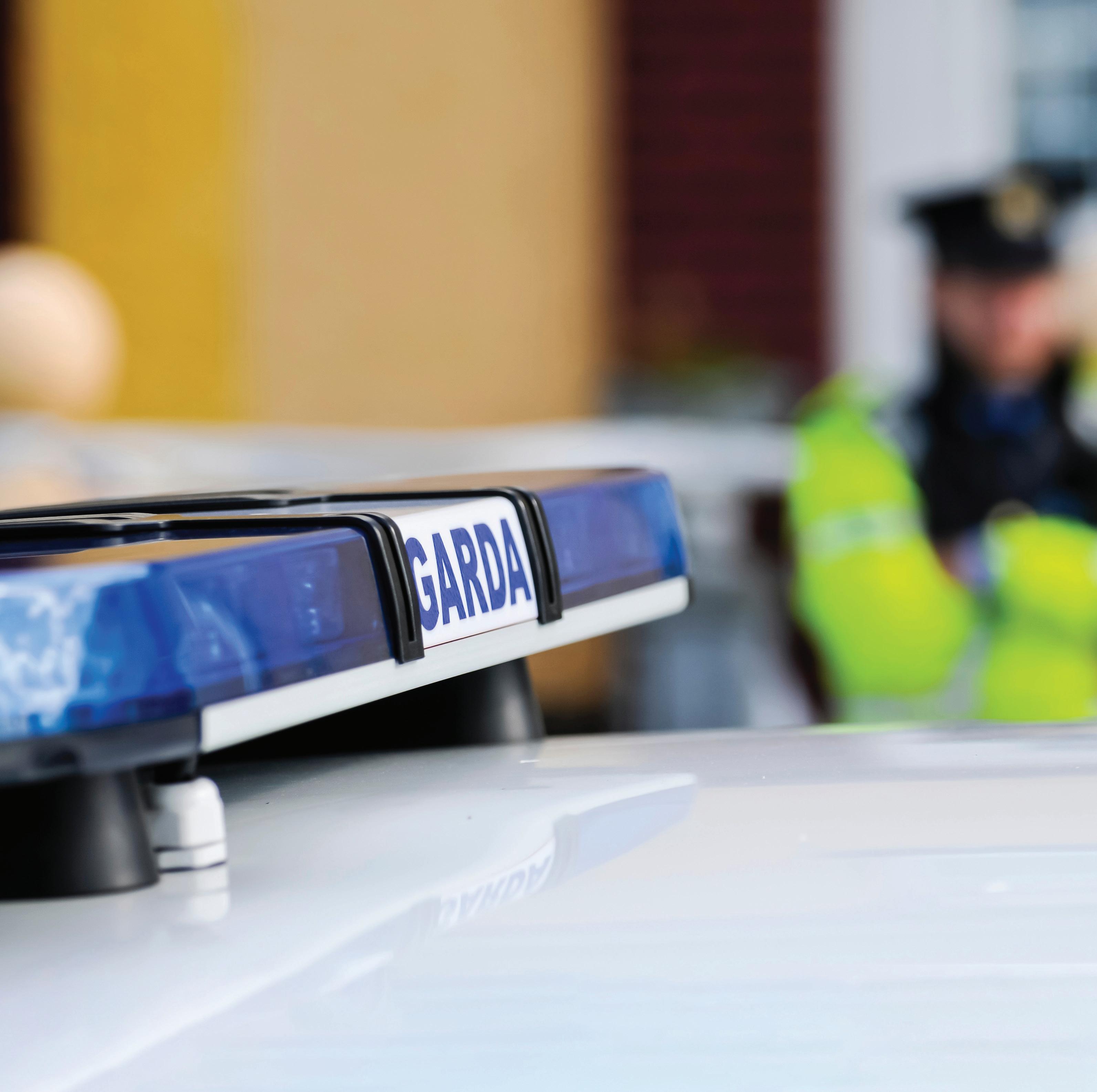
WORRYING INCREASE IN ABUSE
There has been a signi cant and worrying increase in domestic, sexual and gender-based violence in the last year, according to latest available gures.
In 2022, there were at least 49,250 abuse reports received by An Garda Síochána, representing a 9% increase over the same period on 2021.
Recorded incidents of coercive control have also been rising
steadily since 2020, with a total of 481 cases recorded.
ere has been a 13% year-onyear increase in criminal charges brought for crimes involving an element of domestic abuse and a 6% increase in criminal charges brought for breaches of Domestic Violence Act orders.
DEFINITION
An Garda Síochána de ne domestic abuse as “the physical,

sexual, nancial, emotional or psychological abuse of one person against another who is a family member, or has been an intimate partner, regardless of gender or sexuality”.
While the European Commission de nes gender-based violence as violence directed against a person because of that person’s gender or a ecting persons of a particular gender disproportionally, police services worldwide specify several

26 AMBULANCE YEARBOOK 2023
DOMESTIC ABUSE
forms of gender-based violence. ese include psychological violence, stalking, physical violence, sexual violence (including rape), forced marriage, female genital mutilation, forced abortion or sterilisation, and sexual harassment.
ACTIONS
As these cases of domestic violence increase, An Garda Síochána has not only continued to treat all instances of domestic abuse as a priority under Operation Faoiseamh, but also introduced a number of measures including Divisional Protective Services Units, a strong focus on call-backs to victims, and increased training for gardaí in this speci c area.
To date, more than 90% of gardaí have completed coercive controlspeci c training, and the Risk Evaluation Tool that assesses the risk posed to a domestic violence victim by the perpetrator when responding to cases, is now operational in three of four Garda regions.
Speaking towards the end of 2022 about the gures, Detective Chief Superintendent Colm Noonan of the Garda National Protective Services Unit, said: “An Garda Síochána is unwavering in our commitment to supporting victims of domestic, sexual and genderbased violence, and investigating and prosecuting o enders.
“We are focused on a number of operational areas that we believe will enhance how individual gardaí respond to victims of incidents of domestic abuse to ensure that no matter where a person lives, the service and protection they receive from An Garda Síochána will be of a consistently high standard.
“By fully exposing these crimes, as well as constantly improving our policing response and wider policies, we can help reduce the prevalence of domestic abuse in
our society.”
Later speaking on national radio, Detective Chief Superintendent Noonan said An Garda are working with the Justice Department on a national strategy for this particular area of crime.
CHALLENGES
On the back of news that an internal Garda investigation revealed that more than 3,000 domestic abuse calls to gardaí had been cancelled in recent years, he said: “It is something we are working hard to resolve, it has been the subject of a review and we are engaged with the Policing Authority on it,” adding that they had identi ed the reasons why the majority of those calls had been cancelled.
in need of protective services are quick to point out that this is a worrying upward trend.
Safe Ireland noted that while the statistics show a 10% increase on the previous year, this represents an almost 60% increase since 2017, which they describe as “a grave concern”.
CEO of Safe Ireland, Mary McDermott says actions taken by gardaí have helped stop this trend from rising even further.
“Whilst there are issues to be addressed regarding policing, Operation Faoiseamh has been extremely successful and Safe Ireland would like to see the operation mainstreamed and fully resourced,” she said. “ e most recent data provides a strong evidence base for this.”
Sarah Benson, CEO of Women’s Aid, also said Operation Faoiseamh was a “very proactive and public statement to anyone in need of support of An Garda Síochána”.
Pointing out that domestic abuse is one of the most common crimes that gardaí are called to respond to, she welcomes the “continuing commitment” to focus on domestic abuse made by An Garda Síochána.
He also con rmed that Divisional Protective Services Units are now established in every Garda Division, with the latest gures showing that 392 members have been assigned to these units on a full-time basis.
COMMITMENT
Of course, the number of recorded cases of domestic abuse gardaí respond to is not the full picture relating to this crime because not all victims come forward or report incidents, but even with the gures on hand, organisations helping those
“We acknowledge that there is a very strong and robust domestic violence policy within An Garda Síochána,” she said. “What we hope is that all members will be given adequate training support to ensure that they respond in accordance with that policy.”
Personnel assigned to Divisional Protective Service Units are provided with bespoke training in handling domestic violence cases, and during 2020/2021, on top of the 90% of Garda personnel who completed the training in coercive control, more than 80% also completed a Domestic Abuse Online eLearning Programme.
AMBULANCE YEARBOOK 2023
27 DOMESTIC ABUSE
“
BY FULLY EXPOSING THESE CRIMES, AS WELL AS CONSTANTLY IMPROVING OUR POLICING RESPONSE AND WIDER POLICIES, WE CAN HELP REDUCE THE PREVALENCE OF DOMESTIC ABUSE IN OUR SOCIETY”
DAFT FUNK
C Watch North Strand became the Daft Funk Brigade (DFB) in December to raise funds for a special cause

Towards the end of the rst week of December, some teaser tweets started appearing on DFB’s social media pages hinting at something in the works at North Strand re station. A few days later, all was revealed when the ‘Da Funk Brigade’ (DFB),
aka C Watch North Strand, dropped a special dance video to help raise funds for St Joseph’s Primary School for Children with Visual Impairment in Drumcondra.
C Watch say they were so taken aback by the enthusiasm of the students and sta on a recent community visit that they decided they needed to do something to help raise funds for resources and activities. Teaming up with the Special Needs Assistants and other St Joseph’s sta members, they put together a dance routine with the help of video creator Harry Merton
and choreographer Ali Flood to bring some cheer to the festive season.
“We’ve always tried to keep in contact with schools, particularly special needs schools, in the area, because we feel that a er COVID-19 it is very important to have that, as these students were deprived of that community outreach with agencies such as DFB,” they tell me.
“Visits from the likes of us bring out the best in the students, but it also brings out the best in us, because we realise again what we are doing as part of our duty to the community, making us realise why we are here, and that
FUNDRAISER 28 AMBULANCE YEARBOOK 2023
Daft Funk Brigade hit the dancefloor
was the inspiration for the video fundraiser, it inspired us to want to do something di erent, to fundraise for that extra little bit of equipment they might need.
“It always makes a lasting impression on you to go and visit schools and particularly the special
and a bond with St Joseph’s, the students, teachers, carers and parents, and one we want to grow because we feel we are making up for the time lost during the pandemic.”
“I am 33 years in DFB, and in that time, I’ve done fundraising of all sorts inside and outside the job, but for me this was de nitely the most enjoyable one-o fundraiser I’ve been involved in,” says S/O Peter FitzGerald, “because it all just clicked, everyone had a good time, and we raised a lot of money.”
equipment for the school, so with this o -beat dance video we have been able to achieve something tangible, it means something, so everyone involved can be very proud of that.”
e idea for ‘Da Funk Brigade’ itself came from the fact that the visors on the DFB helmets resemble the headgear of the band Da Punk, and so Da Funk Brigade (DFB) was born, and I’ve been told “we will be patenting that at C Watch North Strand!”
needs schools. It means that little bit more, and because we hadn’t been to see the students at St Joseph’s in two years, it became more poignant.”
Following the video’s release, C Watch and members of A Watch returned to the school and were taken aback by the enthusiasm shown by the students as they sang Christmas carols, with C Watch members saying they have “developed a relationship
He is keen to thank all involved, especially Senior Man Roy O’Brien, who “really helped facilitate the whole thing from Day One and was great throughout and was instrumental in putting it all together”, as well as Ali Flood, Harry Merton, Sue Nolan, Mandy and Bridget from St Joseph’s, and all of the C Watch crew for embracing the idea and spending several nights practising and shooting the video.
e fundraising target was €5,000 but the total is fast approaching twice that, with the Christmas period expected to see the sum top the €10,000 mark, and C Watch say “that will make a signi cant di erence in terms of IT or physiotherapy

ey also tell me that Da Funk Brigade will be looking to do something new in the future, so watch this space.

FUNDRAISER 29 AMBULANCE YEARBOOK 2023
“
IT INSPIRED US TO WANT TO DO SOMETHING DIFFERENT, TO FUNDRAISE FOR THAT EXTRA LITTLE BIT OF EQUIPMENT THEY MIGHT NEED”
The Daft Funk Brigade of C Watch crew and St Joseph’s staff
Visiting St Joseph’s again to hear the students sing Christmas carols was uplifting
FIRE ON THE HILL



A wildland fire in Killiney in July led to a major firefighting and logistical operation








The summer of 2022 was the hottest on record in Europe and saw record-breaking wild res, according to the Copernicus Atmosphere Monitoring Service. Wildland res are set to become more frequent, and as one such event in Killiney last summer showed, Ireland is not an exception.

Although it was not on a par with the devastating res that swept across southern Europe, the event towards the end of July nevertheless showed just what kind of operational and logistical response is required of Dublin Fire Brigade when unattended land catches re so close to human residences. With time having passed, it is now worth revisiting the event.
OPERATION




At its peak, the operation that began on 25 July became a seven pump, two water tanker re with 14 DFB units involved, a Senior O cer and Two District O cers (D/O) in attendance, a Diesel Bowser required for refuelling, and a Logistics Support Vehicle that had to constantly re-supply vital equipment and resources to the re crews at the scene. D/O John Reilly, who at the time of the re was on D Watch Donnybrook but has since moved to C Watch HQ, was the rst D/O on the scene.
“ e initial call came in just before 5pm on 25 July as I was just about to go on duty, so I responded with crews from C Watch who were still on duty,” he tells me. “On the way out, a message came in from one of the other O cers who had arrived and said the re was dangerously close to houses and that his crew were wearing BA sets because of the smoke.
“ e area itself is di cult to access, because the roads are narrow, but when
















WILDFIRE
WILDFIRE
30 AMBULANCE YEARBOOK 2023
The fire meant a major logistical operation in terms of refuelling and replenishing supplies
we got there, I could see the re was very close to the houses so we needed to have an immediate plan of action. We made the decision to have two lines of attack initially, to ght the re on Glenalua Road and Glenalua Heights, obviously trying as hard as we could to get as much water on to it as possible to slow the re’s progress.”
A third attack was then laid down from Glenalua Heights to Glenalua Terrace, with a fourth joining them to answer calls of re near houses on nearby Claremont Road.
Calls were put in for a water tanker, a request was made to Dun Laoghaire County Council to increase the water pressure in the area, and a drone pilot was brought to the scene.
PRIORITY
“ e priority was to stop the re spreading to the houses, particularly at Glenalua Heights,” D/O Reilly tells me. “ e gorse was dangerously close to the roo ine because with the design of these houses, the gorse is at the same level as the rst oor, so there was a risk it would spread across.
“I put in the call for increased water pressure, but the problem is that you don’t ever know if that is possible, or when it will happen, so I requested the fourth pump, because I knew we would get that,” D/O Reilly adds. “I knew we didn’t yet have the resources we needed, so I had to manage the operation until we did have them. It was very much tactical mode.”
“ ere was a lot of pressure on D/O Reilly regarding time,” Assistant Chief Fire O cer (A/C/F/O) Greg O’Dwyer tells me, “because they had to evacuate houses immediately, the re was within a metre of engul ng houses on Glenalua Heights and Glenalua Road.
“It wasn’t a massive area, but there were a few acres with steep hills and tough terrain, and the gorse was very high, with branches inches thick and too close to property. But D/O Reilly’s decisive action meant there was a lot of valuable property saved in what was a fairly dramatic re.”
D/O Reilly got in touch with the Mobilisation O cer to request both aerial support from the Air Corps and the use of a drone, and although the Air Corps helicopter would not make it until the next morning, the addition of a drone to
the operation was something he says was very welcome.
DRONE
“Because I was on ground level, it was di cult to be able to see where all of our personnel were within their sectors, and how the re was developing. With the drone, I could instantly get a better view, could see the size of the re, which way it was moving, how fast it was spreading, whether there were any structures or obstacles in the path, and importantly, where the crews were so I could keep them updated.
“Naturally within the job you have to have a trust factor in your o cers and your crews, but there are also things that can happen that can endanger them, and that is why I was so happy with the drone use, because I could see if and when things changed suddenly. You could tell the crews where to go and where there was a risk. It is a valuable tool for every o cer. Using the drone was the best decision I could have made, because it allowed me to see things a lot quicker, and to take action a lot quicker.”
With the situation evolving and threatening multiple structures over several
acres, and the levels of smoke rising, D/O Reilly ordered a full evacuation by the residents of Glenalua Heights, with the assistance of gardaí.
A h pump was brought in as the crews tackled four sectors, while a request was made to gardaí to close surrounding roads. By 9pm, A/C/F/O Greg O’Dwyer was updated on events and was soon in attendance, liaising with the relevant authorities to acquire assistance with water pressure and organising water drops.

One person approached the command vehicle to voice concerns about the re approaching his premises, which D/O Reilly had to investigate.
“Once I realised what the situation was at this particular building, I had to request Pump 6, and a second water tanker,” he tells me. “ ere was a fuel tank near the house and we needed a di erent access point, which was di cult because the roads were already congested, so we had a big logistical task to move vehicles to allow another pump to get through.
“ at house had the only structure that ended up being damaged, a pump house, but that was done through
WILDFIRE 31 AMBULANCE YEARBOOK 2023
“
YOU HAVE TO BE REACTIVE IN TERMS OF DEALING WITH WHAT IS IN FRONT OF YOU, BUT YOU ALSO NEED TO BE PROACTIVE AND BE ABLE TO PLAN AHEAD”
Assessing the scene in Glenalua
excellent decision-making by the technical commander who was at that scene, because he saw there was a priority decision to be made regarding this structure.”

Meanwhile, a sixth and seventh pump were brought in, while the Diesel Bowser was called in from the Logistics Section to refuel the engines at the scene, but logistics also played a vital role in ensuring all crews had the equipment and water they needed, and all of this had to be overseen by the D/O on the scene.
“When you are covering so many di erent areas in di cult and challenging environments, the priority for you becomes
crew welfare,” D/O Reilly tells me. “You also have replenishing challenges, for personnel as well as fuel for the appliances, access to move in and out, displaced residents, so there is a lot to handle. e welfare of personnel is always at the forefront of your mind, and you have to balance the needs of the job at hand with exhaustion and hydration levels.
“You have to be reactive in terms of dealing with what is in front of you, but you also need to be proactive and be able to plan ahead. Once you know you have the initial threat stabilised to the point where you can take a breather, until that
time you can’t relax for one second.”
e rst crews were relieved at around 10.30pm, with subsequent crews from all over the city working through the night before other Watches took over on duty the following day to ensure any rekindling threats were kept under control.

“ ere was a lot of equipment used and involved, a lot of appliances,” A/C/F/O O’Dwyer tells me, “and the Mobilisation O cers had a huge part to play. Logistics were bringing up extra equipment all the time, so it was a huge operation. “
D/O Reilly was relieved around midnight, and as morning came, the threat level and

WILDFIRE 32 AMBULANCE YEARBOOK 2023
Burning gorse came very close to properties
The fire raged into the night
D/O John Reilly (on left) with Sub-Officer Niall Grant
required response lessened and the number of pumps in attendance was scaled back, but BA sets and other equipment, including water, had to be constantly replenished.
AFTERMATH
e Air Corps began making water drops from just a er 8.30am, which A/C/F/O O’Dwyer said “made a signi cant di erence to dampening down the hard to access areas of thick gorse growth”, but the decision had to be made to continue having a re ghting presence for the next 24 hours to continue the re picket and damping down.

“ e wind kept coming up the hill and churning up the re,” A/C/F/O O’Dyer tells me, “and when the gorse burns that heavy and the ground underneath is bone dry, under the surface of the earth you have a thermal blanket, so even when you put out the re above it, the heat from below keeps coming up and ignites whatever stubble is le , so we had to keep it at bay.
“It is hot and di cult work, dragging hoses across gorse and working in di cult terrain, but the rst crews there from Dun Laoghaire, Donnybrook and Nutgrove did a great job to save the houses there initially, and then all of the crews involved did very well to keep the area under control the next day.”
D/O Reilly was back on the scene the next morning, and with the chance to survey the area, was impressed by the work of the crews involved.
“When I walked from one sector to another, you could see the incredible work that had been done, but you could also see just how close it came to being a much more serious incident,” he tells me. “In the end, no houses were damaged because the crews did Trojan work. Working in gorse and that kind of terrain is not desirable because the risk of injuries is huge, but those are the risks of the job in these situations.”
INCREASED RISK
ese situations, he remarks, are becoming more common, and are only going to become more frequent as people continue to live so close to wildland.
“ ere is a big challenge with the gorse and the threat it poses to properties in areas
like Killiney,” D/O Reilly says. “ ere is a balance between people wanting privacy and the bene ts of having the wild natural surroundings, and the risks that can then present in the case of a wild re. Homes in these areas are there because of the location being desirable, and you get a lot of bene ts with that, but it comes with a cost because natural vegetation can pose a threat, particularly when it hasn’t burned for years, as was the case here.”
He believes that while improvements are ongoing, DFB is in a good place to tackle any future incidents of this nature.
“It is hugely advantageous for our crews to have the equipment we had to deal with the wild res,” he tells me. “ ere have been great strides made in wild re training
but we still have some way to go, better equipment to deal with this risk, because it isn’t going away.
“Great stu has been done with the recruit training in this area of re ghting, and in Dun Laoghaire and Rathfarnham they have speci c equipment to deal with these res, as do North Strand and Kilbarrack on the northside, and we have the jeep to be able to access di cult terrain, but as long as we digest what has been done and what needs to be done, we can address it and move it forward.
“Overall, tackling these situations is a bit of a ‘loaves and shes’ scenario, trying to handle a situation when you need so many resources and have to manage with what you have, and deal with what you can.”
WILDFIRE 33 AMBULANCE YEARBOOK 2023
The Air Corps made water drops on the morning after the fire
PROVIDING
HOPE
A new clothing campaign by Defence Force veteran charity ONE aims to raise awareness and funds for their very worthy cause
Anew clothing-based charity appeal to help Dublin’s homeless veterans has been launched by the Irish Defence Forces.
Óglaigh Naisiúnta na hÉireann (ONE), a charity that assists veterans following their service to the country, unveiled their special camou age clothing range on Gra on Street in February.
e ‘Hope Couture’ range re ects the harsh realities some soldiers face a er they leave the Defence Forces, with the designs drawing not just on Army apparel, but also on the locations where former soldiers have been found sleeping rough across the city.

e clothing comes with a QR code visible through the window of the charity shop that members of the public can scan to donate to the campaign. All proceeds go towards providing safe housing for homeless veterans.
Cormac Kirwan, Chief Executive of ONE, said: “ e organisation helps veterans to get back on their feet by o ering accommodation, mental health support, employment assistance, addiction counselling and peer support. We hope that this collection of unique

camou age streetwear will raise awareness around Irish veterans who are experiencing homelessness, and give them the encouragement and resources they need to overcome its challenges.”
DESIGN

e clothing range was commissioned by Irish designer Orla Langan, and features several distinctive patterns inspired by places around Dublin city including Russell Street Bridge, Blessington Street Park, Phibsboro, Luke Street and the Royal Canal.
Fittingly, three veterans who were supported by the ONE charity a er leaving the Defence Forces – Martin Clarke, Eddie Culshaw and Brendan Monaghan - are playing a central role in the campaign by agreeing to tell their stories and model the clothing range.
ONE has helped more than 1,000 veterans out of homelessness since its inception in 1951, and since 1994 has been providing 18,000 beds annually through its residential homes in Dublin, Athlone, Cobh and Letterkenny. It is planning to open a new facility in Cork later this year. e charity also has a network of 38 branches nationwide, as well as 15 support centres.

Speaking about the campaign, designer Orla Langan said: “It was an absolute pleasure and a privilege to collaborate on the ONE ‘Hope Couture’ project and to meet the veterans featured in the (promotional) lm. I really enjoyed designing and making the garments for the veterans with the QR code integrated into the camou age print, knowing its purpose and the critical part it plays in the campaign.
“I got the opportunity to work with a talented and dedicated team, and I am very proud of what we achieved together.”
VETERANS 34 AMBULANCE YEARBOOK 2023
“
WE HOPE THAT THIS COLLECTION OF UNIQUE CAMOUFLAGE STREETWEAR WILL RAISE AWARENESS AROUND IRISH VETERANS WHO ARE EXPERIENCING HOMELESSNESS”
MARTIN CLARKE
Veteran Martin Clarke, 56, from Cabra, joined the Defence Forces as an infantry soldier in 1985 when he was just 17, and was stationed at Collins Barracks in Dublin.


In a career spanning 27 years, he served overseas with the 63rd Infantry Battalion in 1988, the 69th Infantry Battalion in 1991, and the 74th infantry Battalion during the winter period between November 1993 and April 1994 as part of UN peacekeeping missions in South Lebanon.
In 2012, he was set to travel to Chad on another peacekeeping mission but got prostate cancer, and le the Defence Forces, but he also moved to the US a er marrying an American woman. When he got divorced, he returned to Ireland and found himself seeking help from ONE.
He told a national newspaper: “I returned from America and I really had nothing. It was a frightening
time. I wasn’t working and my mental health su ered. I don’t want to say I became institutionalised, but it’s all I ever knew and it was hard when it all came to an end. I really missed it, and I still do today. ere was great camaraderie and it was a real way of life for so many. When that stops, you don’t know what to be doing.
“ONE was there for me, and I can’t thank them enough. ey help you out with everything, from a medical card to moral support. Nothing is too much for them, they’re a phenomenal organisation. ere’s always someone there for you if you need to talk, and I’m a trained chef, so I’ve been able to work in the house we live in. I get to do something constructive with my days and I love it.”
Regarding the clothing campaign, he says: “Who doesn’t want to be a star? It’s a brilliant campaign, and hopefully raises awareness for the work ONE does because without it so many men would be on the streets. ey really changed my life completely, and I owe them so much.”
EDDIE CULSHAW
Eddie Culshaw, 60, was born in Manchester but was brought up in Ballinteer. As a child, he already knew he wanted a life on the water, and in 1970 he joined the Naval Service in Haulbowline, Cobh.
For the next 25 years he served his time on several Naval ships, before transferring to the Naval Service Reserve, where he spent another 18 years, giving a combined 43 years of service to the Defence Forces.
“I always wanted a life on the high seas,” he says. “I loved the water and I loved the 40 plus years I spent in the Navy. I lived on ships out on the Atlantic Ocean and have been all over the Mediterranean. It was a dangerous life on the high seas, lives were put on the line at times, men serving their country. But when I turned 60 it was time for me to retire, but it was hard.”
Eddie was initially worried about leaving, and when his marriage ended, he found himself living in the shed in the back garden of a family member.


VETERANS 35 AMBULANCE YEARBOOK 2023
Martin on a peacekeeping mission as a young man
Eddie always wanted a life in the Naval Service
Martin Clarke wearing a piece from the Hope Couture range
Eddie Culshaw wears Hope Couture
“My marriage ended and I was living o a pension,” he continues. “I was actually working as a safety o cer in Dún Laoghaire, but I just found things too hard. I was never going to get a mortgage, so what could I do? I was always aware of ONE, but I never thought I’d need their service, but ten I did, and I couldn’t be more thankful.”
BRENDAN MONAGHAN

Brendan Monaghan, 62, from Ballyfermot, joined the Defence Forces in 1977 when he was 17, and served for 1 years.
A er his training, he was posted to the Cavalry Corps and was serving in South Lebanon at the time when Corporal Michael McCarthy was tragically shot dead in 1991, saying that the killing of Private Sean Rooney in the same region last year really hit home with him.
DONATE:
You can donate € to the campaign by going to www.one-veterans. org/donate, or by texting VETERAN to 50300.
You can also watch the campaign video here: https://youtu.be/qfAbFkXD8fo
while serving abroad.”
Despite the challenges, Brendan says he “loved every minute of the Army, and really missed it a er it ended. I was living in the Curragh and had children, but I just felt the time was right, but then I didn’t want to leave and regretted it.

“I have done umpteen jobs since but I never had a regular wage. In the Army you could always rely on that, but I was doing bits and bobs when it ended, so life got very tough.”
When his own marriage ended, Brendan moved to Dublin, but life got even tougher.
He moved into ONE’s Brú na bhFiann in Smith eld, Dublin, and his life changed, so he was eager to take part in the clothing campaign, which he says was: “gas work, a lot of fun, and I’m delighted to be involved with it, and hopefully the message it’s trying to convey gets across.”
“I was one of the soldiers who donated blood when Corporal McCarthy was shot, that’s why I remember it so well,” he says. “ at’s also why it really hit me hard when Private Rooney died. Two identical incidents, two factions shooting across the road at each other. It was a tragic incident, but both killings just show the dangerous situations Irish peacekeepers are faced with
“Someone suggested I try ONE and it has just been phenomenal. We’re all exsoldiers so the camaraderie there is great. I don’t plan on staying forever, but at the moment I’m really enjoying it. My life has turned around completely, and it’s all thanks to ONE.
“I just hope this campaign is a great success because it is a charity that deserves so much, so hopefully the awareness increases and some funds can be raised to ensure other former Defence Forces members are able to live a decent life when they leave.”
VETERANS 36 AMBULANCE YEARBOOK 2023
“
MY LIFE HAS TURNED AROUND COMPLETELY, AND IT’S ALL THANKS TO ONE”
Brendan Monaghan in a piece from the Hope Couture range

NEW DFB RECRUITMENT CAMPAIGN
Diversity, Equality and Inclusion at Centre of Message for Potential New DFB Members
An eye-catching recruitment campaign to attract potential new recruits to the Dublin Fire Brigade took place over three weeks from 28 October.

Aiming to not just increase the numbers within DFB, but to increase the diversity within those numbers, the campaign led with the slogan of “hiring a diverse team for a diverse job”.
It also conveyed the message that “it takes more than physical strength to be a re ghter/ paramedic” to highlight the many attributes that the organisation is looking for, including “compassion, communication and teamwork”.
Assistant Chief Fire O cer Greg O’Dwyer tells me that the emphasis on diversity was something DFB has been working towards for several years.
“While we would never condone any kind of positive discrimination, we certainly want
to enhance the diversity of our workforce,” he explains, “and we are trying to reach out to minority groups, and in particular to females, to allow people to know that they are eligible and have the attributes to apply.
“We have a public sector duty in DFB as part of Dublin City Council, to do that. DCC was the rst local authority to apply the Public Sector Duty charter, and DFB was the rst section of DCC to take it on, and what that means is that we had to put in place an implementation plan to improve diversity, equality and inclusion across our organisation.”
MESSAGE
As part of this three-year implementation plan, one recommendation was to hold workshops at re stations, as well as forums, and surveys to discover the perceived barriers to people from minorities applying
for positions in DFB.
“At one of these workshops,” A/C/F/O O’Dwyer says, “I was talking to a female re ghter who said she was part of an athletics club and when she applied for DFB and got in, her friends expressed surprise and said: ‘Oh, we never knew we could apply for that, would we be able to do that job?’ and we found that we needed to get the message across that yes, of course they can do the job, and that the biggest barrier to, for example, females joining DFB is a misconception that they wouldn’t be able for it, and therefore didn’t apply.
“Of course, anybody who applied still has to pass all the same tests – aptitude, physical and medical tests, requirements for driving license, etc – applications all have the same requirements and people need to prove a certain level of ability, but we aimed to get rid of the false impression that you have to
RECRUITMENT 38 AMBULANCE YEARBOOK 2023
Aleric, Liam, Adam and Laurie at the advertising shoot in Phibsboro fire station
be 6/2 and 15 stone to join DFB because there are certain aspects of the job that require other assets and abilities, such as skill, teamwork, communication and compassion.


“Normally we only get a 5% rate of female applicants, and we only have about 5% in each class of recruits and 5% in the job generally, but that would align with the percentage of females who are applying,” A/C/F/O O’Dwyer adds. “We are trying to increase the percentage of females applying, which in turn could increase the percentage of females in the job, but it must be emphasised that this wasn’t just a campaign to get more females in the job, it was to get as many eligible candidates to apply as possible by getting the message across that the job is not just for a certain pre-conceived type of person, whether male or female.
“So far, it looks like this campaign was a success in this regard, with a 20% application by female candidates this time, four times the normal application ratio. We wish them all well in the rest of the recruitment process and hope this feeds into more successful female recruits joining our ranks.”
EQUALITY
e message of equality was equally strong, and was founded on engagement with community groups for minorities who similarly may have felt they were not eligible to apply.
“ rough working with the South Dublin City Partnership and various groups, we emphasised the fact that minorities are part of the community, and our re stations are part of the same community, so we would like them to be a part of it and to show their interest in joining,” A/C/F/O O’Dwyer tells me.



Career days were held for these groups to educate people about the job, with the partnerships working to identify candidates who show an interest and try to help them with the application process and test preparation.
e recruitment campaign itself saw DFB spreading their message of attracting a diverse group of new recruits via newspaper and radio ads, bus shelter billboards and a very active social media campaign, and this was supplemented by an Instagram-based “Ask Me Anything” session and an event hosted by former Lord Mayor Alison Gilliland in which three female re ghters explained their roles and how the job was very much open to females and other minority groups within DFB.
CAMPAIGN
e campaign features three operational re ghters – Aleric Collier, Adam McNally, and Laurie Baxter - and one retired member –Liam ‘Nobby’ Clarke – who all volunteered to take part. “ e advertising company wanted to use actors, but I felt it was important to have our own personnel as the faces of the campaign,” A/C/F/O O’Dwyer tells me.
e results of the recruitment process –which has almost 5,000 applicants, will be the acceptance of approximately 200 new recruits who will join a panel lasting two years.
“ e exact number depends on the quality
of the applicants,” A/C/F/O O’Dwyer explains, “and with that panel, we will have two classes a year for the next two years to train up and join our ranks.”
e top 700 applicants will have taken an in-person supervised test in December, with the top 500 interviewed in the new year before that is whittled down to the target gure of 200.
“We will also be doing a recruitment campaign for Emergency Service Controllers next year,” A/C/F/O adds, “and we will take a similar approach in terms of the message and the platforms we use, so that will also help increase the diversity we are looking for.”

RECRUITMENT 39 AMBULANCE YEARBOOK 2023
The recruitment campaign adverts on social media, emphasising the strengths of compassion, communication and teamwork
TAKING THE LEAD
Karen Kelly, Civil Defence’s first female dog handler, and Meath Civil Defence Officer Shane Quinn, talk to Adam Hyland about the organisation’s K9 Unit

The Civil Defence was in the news in March when it was announced that they have recently added two new dogs to their Victim Recovery Unit, with volunteer member Karen Kelly having quali ed as the rst female
dog handler with the organisation.
e expansion of the specialist units within Civil Defence, the volunteer-based organisation supporting frontline emergency services, is necessary, enabling them to carry out, among many other services, search and rescue
operations, and this is very much welcomed by Meath Civil Defence

O cer Shane Quinn, who oversees the region in which Karen and her dog Rossi, a Springer Spaniel, work.

“I’ve been involved with Civil Defence since 1994, long before there were K9 or boat units, back when searches were done by groups of volunteers out on the ground in mucky boots,” he tells me. For him, staying so long has allowed him to see the improvements made, but also to see the dedication his team has.
“I joined the Auxiliary Fire Service back then and my plan was to stay for a year, and almost 30 years later I am still here,” he says. “ e way I see it, there are two types of volunteer in the Civil Defence: those who come and reap the bene ts of being in the organisation and then move
40 AMBULANCE YEARBOOK 2023
CIVIL
DEFENCE
Members of the K9 Unit with Karen on the left
on a er getting their certi cates and improving their CV, and then there are the rest of us. In Meath, thankfully, the majority of us are ‘the rest of us’.”
Following time with the Auxiliary Fire Service, Shane got involved with search and recovery on boats, but then “found a niche” in instructing re ghters and being involved in Rope Rescue and Technical Rescue.
“Everyone in Civil Defence does the missing person search responder course though,” he adds, “and all of us can be tasked with conducting searches. You have the likes of Karen then, who come in and do a speciality on top of the normal training and duties, and having her as a dog handler is fantastic for us.
SPECIALISTS
“All counties have drone capabilities now that can be really helpful, but only four counties have K9 units. Similarly, every county has access to a rescue team but only six have a Rope Rescue team, and while every county has access to boats and swi water capabilities, only six have kayak specialists, so we are fortunate to have Karen working with us as part of our team but also as part of the K9 Unit.
“ e support of the K9 Unit, as we have with Karen and Rossi, is the biggest improvement in search and recovery in all the time I’ve been here,” Shane adds, “because a dog and handler can cover a lot more ground a lot more quickly than a team of 20 volunteers on foot. ey are irreplaceable.”
Karen joined Civil Defence almost ten years ago as a volunteer, assisting the team while also working for her family business Phibsboro Electrical, and she says that much like Shane, she didn’t plan to stay for so long.
“I initially joined to broaden my CV because I wanted to join the Gardaí,” she tells me. “But when I got into Civil Defence, I realised it was a much broader community than what I
thought the Gardaí would provide, so I stayed on and decided to keep my job and give back to the community in a voluntary way. I also met so many good people through Civil Defence that it would be hard for me to leave now.”
As a dog lover and dedicated volunteer with Civil Defence, it was natural that Karen would want to qualify as a dog handler.
“I’ve always been an animal lover, but speci cally dogs,” she tells me, “and to be able to put them into use where they are such an asset is phenomenal. e training involved and the whole process of bringing a dog on to be able to do such a rewarding job is great.”
TRAINING
at training involved a year-long course that included 150 hours of guided training from a National Association of Specialist Dog Users recognised body in the UK.
“150 hours may not sound like a lot when it comes to the job we are doing, but it is actually an enormous amount of work,” Karen says.
On top of the skills that both handler and dog need to learn, the most important part of the process is forming a bond between the two that will see them live together and successfully work together to locate missing or deceased persons in all terrains and weather.
BONDING
“ e easiest part of it was actually the bonding process,” she adds. “I’m actually Rossi’s h owner and nobody had made a bond with him before. He was originally a trial dog, then a gun dog, but when he came to me, thankfully he took to me immediately. He’s my shadow, but I only have to say the word and he gets to work. When I get the call, I usually just have to rattle the keys and Rossi is in the van with me, ready to head o on a search.”
In terms of how an operation involving a search and recovery dog works, Shane tells me that for missing persons, he will receive a call from An Garda Síochána, and he then calls Karen to see if she is available.
“Generally, we try to make sure there are two dogs and handlers for each search,” he says, “just for safety reasons, but if there is only one dog, one of us will walk 50 metres behind her, just in case something happens to them and they need assistance.”
In order to be ready for a search call, Karen says that home life has a regime that helps bring out the best in Rossi, including a 6.30am walk so that if there is a call later that day he has had time to rest, and no food in the morning so that Rossi doesn’t have to work on a full stomach.
OPERATIONS
When the call comes in, Karen says there are cues to let Rossi know that it’s time to go into work mode.
“Initially I put the harness on Rossi, and a lot of people will say the click of that going on sets the dog into work mode, but with Rossi, him just seeing me put on my tact vest is enough to switch him into action and he knows something is about to happen.
“I put the harness on him and walk to the start of the search area, and as soon as I take him o the lead and tell him to ‘go nd’ he is gone searching.”
Unlike other dogs in the Unit who bark when they make a discovery, Rossi gives o body language that Karen has learned to interpret due to their close bond.
CIVIL DEFENCE 41 AMBULANCE YEARBOOK 2023
“
THE SUPPORT OF THE K9 UNIT IS THE BIGGEST IMPROVEMENT IN SEARCH AND RECOVERY IN ALL THE TIME I’VE BEEN HERE”
“ ere is a long list of di erent types of body language he gives o ,” Karen tells me, “and I don’t know what it is but we both communicate really well and have gotten to understand each other, so I can read what he is saying to me.”
Most search dogs also work o a reward incentive, but Karen says Rossi is just happy to be acknowledged. “He really does the


work just for me to play with him and give him a ection,” she says. “I do try to reinforce that reward by giving him a tennis ball to play with, because I can’t be sure he will always want to work just for my a ection, so the ball is there as back-up, but for now he is more than happy for me to make a fuss of him.
“With other dogs, you have to make a big hullabaloo and jump
around to show your appreciation, tell them how great they are, but with Rossi it is more of a quiet, intimate moment where you just scrub his ear and tell him he is a great lad and that is the happiest he will ever be.”
When not working, Karen says Rossi has “a great o switch” and is a real couch potato.
“Normally with Springer Spaniels they are always on the go, but with Rossi you can just open the door to his crate, or open the sitting room door, and he will just plop down on the ground. Sometimes a er our morning walk, I will be sitting at the kitchen table and he will lie on the cold tiles just to be near me, while my other dogs are running around. He just wants to be beside me.”
CIVIL DEFENCE 42 AMBULANCE YEARBOOK 2023
Karen and Rossi are ready to spring into action for search and recovery operations
Karen became the first female dog handler in the K9 Unit this year
GROUNDBREAKER
Regarding becoming the rst female handler in the Civil Defence, Karen is proud but also pragmatic.
“ ere was really no reason why there wasn’t a female handler in the K9 Unit before me,” she says, “and in Meath we actually have two other women who act as bodies for training purposes. I would always push the message that those antiquated views of females doing certain jobs no longer have a place, they are old and gone. When you look at the National Ambulance Service, there are probably as many women as men, or at least much nearer equality than ten years ago.”
Shane con rms this, and admits that when asked to ‘body’ for a training operation with the KY Unit’s rst dog, he baulked at the weather forecast and said he didn’t want to hide in a ditch in the sleet and rain, but wasn’t surprised when he heard that Karen and the other women in the group were already on board for it.
“Karen, and the others, have put in the work and are reaping the rewards,” he tells me. “Since the K9 Unit started bodying training, the two bodies have been female, and Karen’s position now is the reward for the hard work she has done.”
Shane adds that the publicity around Karen becoming the rst dog handler in the organisation has been a great bene t for the Civil Defence.
“Every other day, somebody wants to talk to her about it, and that is great for the K9 Unit, and for Civil Defence in Meath, because it draws massive attention to what we do,” he says. “Even on St Patrick’s Day we were being asked if Karen and Rossi were going to be in the parade, because she was in the news. at was great publicity and promotion for the organisation, not just in Meath but nationally, to let people know we have this team of dogs and handlers who do this vital work, and of course in
Meath we are bene tting hugely from having Karen and Rossi with us.
“ e publicity doesn’t do any harm in terms of attracting volunteers either,” he adds. “Since the launch of the K9 Unit on news outlets at the start of March, I’ve had 32 applicants to join the Civil Defence in Meath, so you can’t knock that. In Meath we have 215 volunteers, while nationally there are 3,000, so there are plenty of people doing it, but there is plenty of room for more, because we could never have enough volunteers.”

Talking about that publicity, Karen laughs, saying she has gotten a lot of good-natured slagging over it, with her husband Darren, who is also the Meath Civil Defence kayak instructor,
teasing that he was the youngest ever Advanced Paramedic in the country when he rst quali ed, and it is Karen who is getting the publicity.
“I’m very grateful to him for his support,” Karen laughs, “but the publicity has been good for the organisation. Just to be able to promote females in any area is exceptional, and it means so much to me to be the rst female in anything, to be honest. It is something I absolutely love to do and you get to help your community, so what more could you ask for?”
If you are interested in volunteering with the Civil Defence, go to https://www.civildefence.ie/join/.
CIVIL DEFENCE 43 AMBULANCE YEARBOOK 2023
“
THE TRAINING INVOLVED AND THE WHOLE PROCESS OF BRINGING A DOG ON TO BE ABLE TO DO SUCH A REWARDING JOB IS GREAT”
Carrying out search and recovery training
THE LATEST INNOVATIONS FOR THE WORLD’S EMERGENCY SERVICES
TECHNOLOGICAL TOOLS AI-ASSISTED HELMETS
Researchers in Scotland have developed a helmet that uses arti cial intelligence to help re ghters nd and rescue people more quickly in challenging conditions.
A team from the newly-opened National Robotarium in Edinburgh designed the device using sensors, thermal cameras and radar technology, with operational tests carried out in collaboration with the Scottish Fire and Rescue Service at their training facility in Newbridge, Edinburgh.
It is hoped the technology could support re ghters and scene commanders to safely navigate dangerous conditions such as smoke- lled areas, using realtime technology mounted on a 1kg device that ts on standard re ghting helmets.

Dr Chris Lu, Lecturer in Cyber-Physical Systems in the School of Informatics at the University of Edinburgh, who is leading the project, said: “Fire ghters o en operate in environments with very low or no visibility due to the vast amount of smoke released from a re. is can make detecting the location of potential victims and the whereabouts of re ghters very challenging in situations that are o en extremely time-sensitive. is new technology has the potential to support on-theground re ghters and scene commanders to make crucial in-the-moment decisions that can enhance search rescue e ciency, ensure safer collaboration between teammates and, most importantly, improve outcomes for potential victims of re scenes.”
TUNNEL RESCUE VEHICLES
Muller Technologie has presented two new re and rescue vehicles specially designed for tunnel rescue to the Rhaetian Railway for use in the Vereina tunnel in eastern Switzerland.

A vehicle will be stationed at each end of the tunnel, with the Klosters-Serneus and Zernez re brigade bases alerted to go to the portal stations in the event of an incident.
Both vehicles have a low-bed wagon with an identical driver’s cab at both ends, and has a 25,000 litre temperature-controlled water tank and storage space for all necessary re ghting equipment.
e vehicles can carry up to 12 re ghters with BA and PPE in the crew room, with space for four more team members in the cabs, and can each carry up to 100 people out of a danger zone.
TECHNOLOGY 44 AMBULANCE YEARBOOK 2023
SANITISING BRIDGE


Fire vehicle and equipment specialists Rosenbauer have developed a new solution to combat the spread of easily-communicable diseases in high-tra c sites and public hotspots. eir RPS AeroGate disinfection bridge, rst demonstrated at the Interschutz trade fair in June, creates a germ-free environment inside a glass cube across a 5metre length, giving pathogens no opportunity to take hold, and reliably deactivating them when passing through the portable structure.
e air on the AeroGate disinfection bridge is enriched with a biological agent that breaks down the lipid layer of bacteria and viruses, with the sanitation liquid atomised so nely by high-pressure frequency nozzles that the air volume in the disinfection bridge is evenly and completely lled, and people passing through the space feel nothing but a slightly increased humidity level. e e ectiveness of the aerosol used for the RPS AeroGate has already been con rmed by specialist institutes, and veri cation of its harmlessness to health is currently still in progress.
e bridge, which is versatile and exible both as a mobile solution and xed structure that can be used in tents at events and as a permanent installation at airports, shopping centres, hospitals and exhibition centres, allows up to 750 people to pass through it per hour, and is wheelchair-friendly. It is also extremely easy to service thanks to the simplicity of the technology involved and the design.





TINY RESCUE VEHICLE
Opel has created a new one-o rescue vehicle for a re and emergency services department in Germany.


e special version of the Rocks-e heavy quadricycle, which measures just 95 inches long and 55 inches wide, and has a turning radius of just 7.2metres, was presented to the re brigade eet at the Russelsheim plant near Mainz.
e electric vehicle is intended for use as a highly-manoeuvrable piece of equipment designed to reach and bring re ghters swi ly to every corner of the Russelheim facilities, and has a tiny 8hp electric motor and 5.5kWh battery. It has a top speed of 45km/h, and can cover 75km on one charge.
TECHNOLOGY 45 AMBULANCE YEARBOOK 2023
their

their entire
There are almost 4,000 children homeless in Ireland. Donate now. focusireland.ie 1850 204 205






CHY7220
When a child loses
home, they lose
world.
THE SATSUMA COMPLEX
If you’ve ever seen him on Would I Lie to You? you’ll know that comedian Bob Mortimer can tell funny stories, whether they are true or not. If you’ve seen him on Gone Fishing with old friend Paul Whitehouse, you’ll know he can be insightful and sweet. If you’re a fan of his bizarre work on Vic Reeves’ Big Night Out and Shooting Stars, you’ll know he has a hilarious sense of bizarre and surreal humour. In his rst novel, he combines all of these elements to bring us a hugely enjoyable crime mystery.
e likes of Richard Osman and Ardal O’Hanlon (the latter’s Brouhaha was reviewed in our previous issue) have introduced a new wave of ‘cosy crime’ stories, and you would be forgiven for wondering if every comedian thinks they have a novel in them, but in the case of Mortimer, they absolutely have. Having interrupted a tour with comedy partner Vic Reeves in 2015 to undergo lifesaving heart surgery, he discovered a desire to try new things, hence several podcasts, an autobiography, and now this novel, and as with all of his work, it doesn’t disappoint.
Taking liberal doses of his own experiences as a shy solicitor in London in the days before he fell into comedy, the author is clearly visible in Gary, an unassuming legal assistant who stumbles into a mystery one night when he meets an old private eye friend for a pint. His friend departs suddenly, leaving behind a USB stick of unknown origin in the shape of a corn cob, and Gary thinks nothing much of it, instead becoming smitten with and unsuccessfully irting with a woman at the bar whose name he never discovers.
However, when his friend is found dead in suspicious circumstances a few days later, with the aforementioned lady somehow connected, he begins a quest to discover the truth, ambling through the streets and pie shops of South London in an e ort to nd the woman from the pub, in turn revealing a case of domestic abuse, police corruption and possibly murder.
Mortimer brings all the tropes of the crime novel into play well – the unwilling but curious investigator, the femme fatale, brutish policemen - and provides good twists to keep us on our toes, but it is the surreal details that make this stand out. ese range from the little quirks each character displays, to interludes where Gary imagines a squirrel questioning his investigative capabilities, but somehow none of these comic elements seem forced, instead becoming part of the main character’s narrative and point of view. is is a clever, charming and very funny crime story that doesn’t take itself too seriously, much like the author himself, and is a highly recommended read.
AUTHOR: BOB MORTIMER
PUBLISHER: GALLERY BOOKS

AVAILABLE:
EASONS, HODGES & FIGGIS, DUBRAY
PRICE: €17.99
BOOK REVIEW 47 AMBULANCE YEARBOOK 2023
THIS SEASON’S BEST READS BOOKSHELF
THE GUARDIANS: 100 YEARS OF AN GARDA SÍOCHÁNA

An Garda Síochána celebrated the centenary of its foundation this year, and along with the fanfare and ceremonial events to mark the historic founding of an unarmed police force that replaced the British-led RIC comes this book looking at the 100-year history of the force.
Compiled by Garda Stephen Moore and overseen by an editorial board, it consists of 39 individual articles and essays (not counting the forewords and prefaces) from contributing gardaí of all ranks that cover the whole gamut of Garda history. This includes the origins of the organisation from its first clandestine meeting, through operations during Civil War, World War II and the Troubles, but it also includes contributions on social and political aspects, major crimes and events, and the evolution of the force to become what it is today. Once you’ve read it, you’ll have a newfound appreciation for the men and women who act as guardians of the pace.
THREE CASTLES BURNING: A HISTORY OF DUBLIN IN TWELVE STREETS

AUTHOR: DONAL FALLON
PUBLISHER: NEW ISLAND
AVAILABLE:
EASONS, HODGES & FIGGIS, DUBRAY PRICE: €16.95
DFB historian Las Fallon’s son Donal is an accomplished and wellrespected social historian in his own right, and this book based on his popular podcast is a great read. If you’re a fan of that podcast you’ll know what to expect – fascinating insights and little-known trivia about Dublin’s streets and characters that will make you look at the city in a di erent light.
Fallon focuses on 12 specific streets - Henrietta Street, Watling Street, Fishamble Street, Rathmines Road Lower, South William Street, Parnell Street East, James Joyce Street, Ship Steet, Church Street, Eustace Street, Pearse Street (to Westland Row) and Moore Street – and champions the people who lived and worked there. Activists, architects, poets, merchants and artists are all represented in the depiction of the making and remaking of a city, and Fallon brings his characteristic flair to the telling of the stories of these lesser-known heroes and events that transpired in their time.
LEAVE THE GUN, TAKE THE CANNOLI: THE EPIC STORY OF THE MAKING OF THE GODFATHER

The stories behind the making of Francis Ford Coppola films are legendary. The documentary Hearts of Darkness revealed the chaos and madness behind filming Apocalypse Now, and in this fascinating book that takes its title from an infamous line in the film, journalist and author Mark Seal gathers the truth, lies and everything in between that transpired during the making of Coppola’s other masterpiece, The Godfather. He reveals stories that are just as gripping, entertaining and dramatic as the film itself through interviews with the director and actors including Al Pacino, James Caan and Talia Shire, plus other ‘silent sources’. Alongside the usual complications came predictable but major interference from the Mob, with several underworld characters vying to be in the cast, a brawl between author Mario Puzo and the heavilyconnected Frank Sinatra, and ominous threats directed at producers. A great read for film-lovers, well told in a pacey, page-turning fashion.
AUTHOR: GARDA STEPHEN MOORE
PUBLISHER: O’BRIEN PRESS
AVAILABLE:
EASONS, HODGES & FIGGIS, DUBRAY
PRICE: €29.99
AUTHOR: MARK SEAL
PUBLISHER: SIMON & SCHUSTER
AVAILABLE:
EASONS, HODGES & FIGGIS, DUBRAY
PRICE: €28
BOOK REVIEW 48 AMBULANCE YEARBOOK 2023

INSURING IRELAND












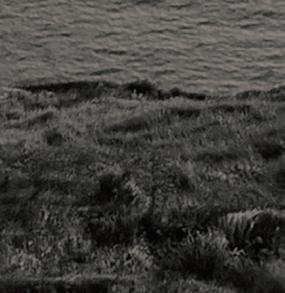



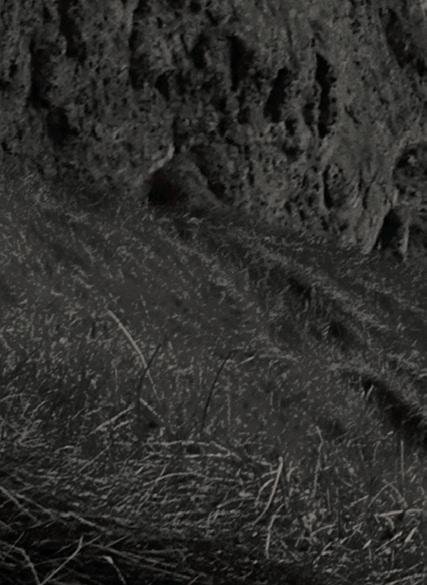









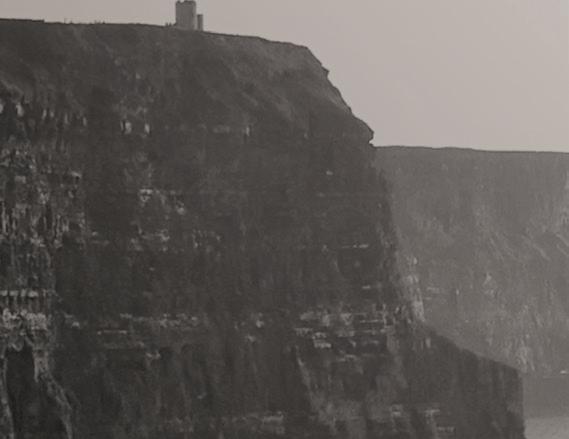











At IPB Insurance, we are proud to be Ireland’s only indigenous mutual insurer, owned by our Local Authority and ETB Members. From the Cliffs of Moher to the Spire in Dublin, we have been protecting our Members and their communities nationwide for over 95 years. IPB Insurance CLG, trading as IPB Insurance, is regulated by the Central Bank of Ireland. For business in the UK, IPB Insurance is authorised by the Central Bank of Ireland and subject to limited regulation by the Financial Conduct Authority. working to make a difference | www.ipb.ie





























































































































































































































































































































































































































































